The Highlands is packed with interesting cathedrals, churches, and other religious buildings. These range from the small but historically important, to the large and grand.
Many of these can be reached by train, with more an extra bus or ferry journey away. Read on for historic connections with Robert the Bruce, connections with the Jacobites, the most northerly cathedral in Britain, Italian prisoners of war and more.
The cathedral was constructed between 1260 and 1501. It suffered damage due to unrest and later the Jacobite uprising.
Today the tower and chapter house are complete. The east end is still a local church while the west end is now ruined, having never been rebuilt. The Parish Church and cathedral grounds are accessible, however, unfortunately there is currently no access to the ruined cathedral nave or the tower.
Transport: 20 minutes' walk from Dunkeld and Birnam station.
See our Guide to Dunkeld and Birnam for other places to visit, accommodation and restaurants.
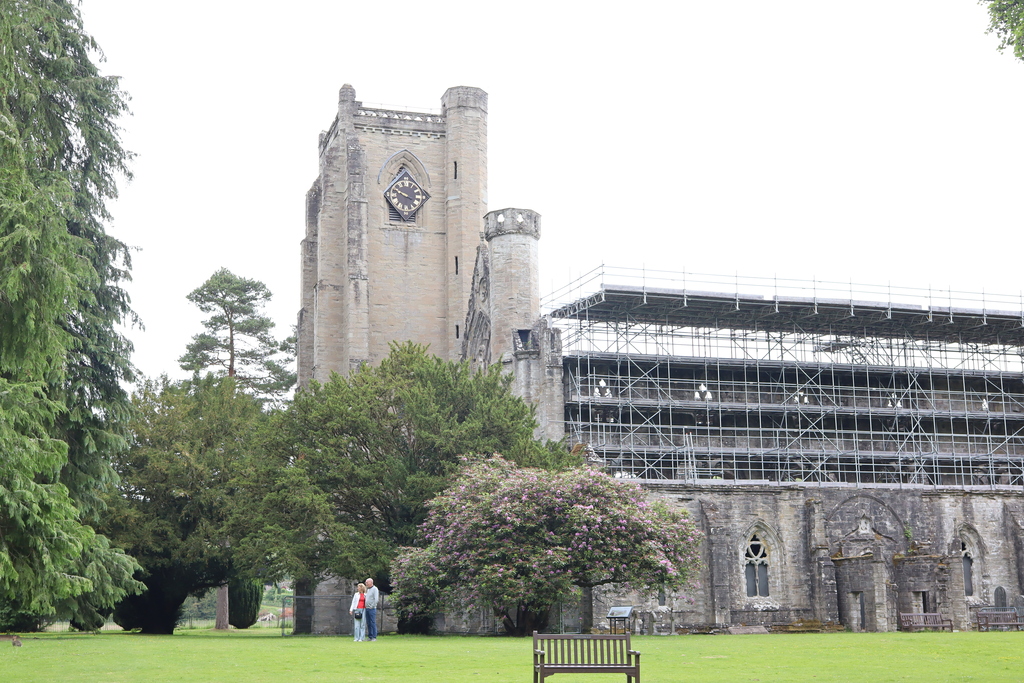
Medieval Dunkeld Cathedral...with 21st century scaffolding
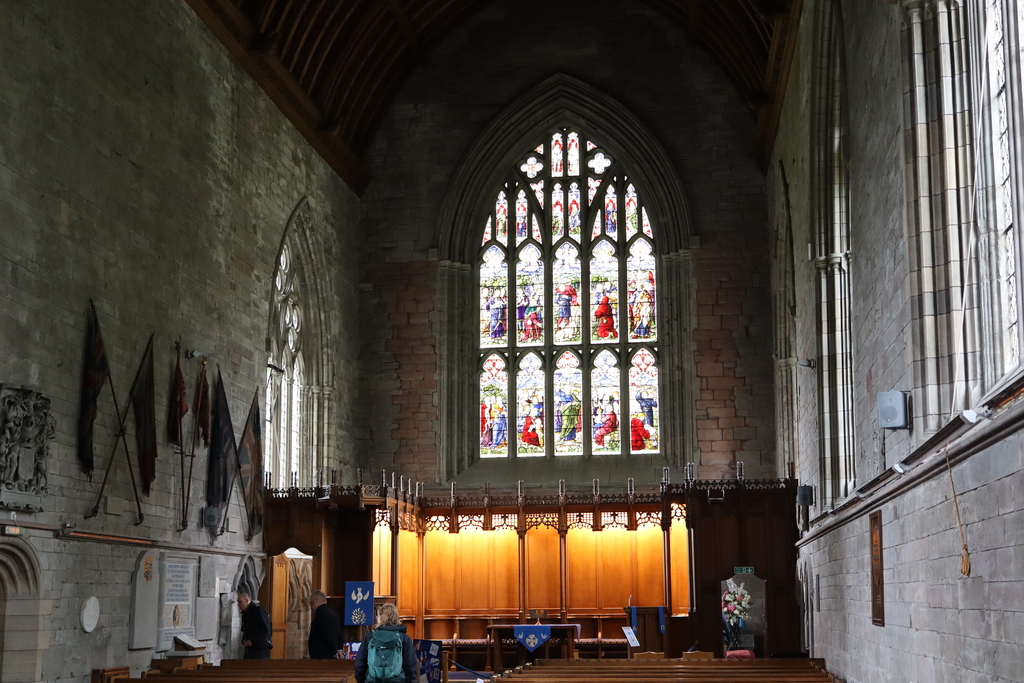
Inside the parish church section
ST BRIDE'S KIRK, ATHOLL ESTATE
This ruined 16th century Kirk has origins going back to Celtic times. It is in the grounds of Blair Castle & Gardens, which is the best visitor attraction we have visited.
The Kirk is the resting place of Jacobite leader Bonnie Dundee (Viscount Dundee, John Graham of Claverhouse). He was buried here in July 1689 after his death at the battle of Killiecrankie, and the burial vault was opened in the 1790s.
Transport: 15 minutes' walk from Blair Atholl train station.
If you visit the castle late in the day, the main driveway gates will be closed when you leave. However, it is still possible to get out that way through them as a pedestrian, don't follow the cars leaving the long way!
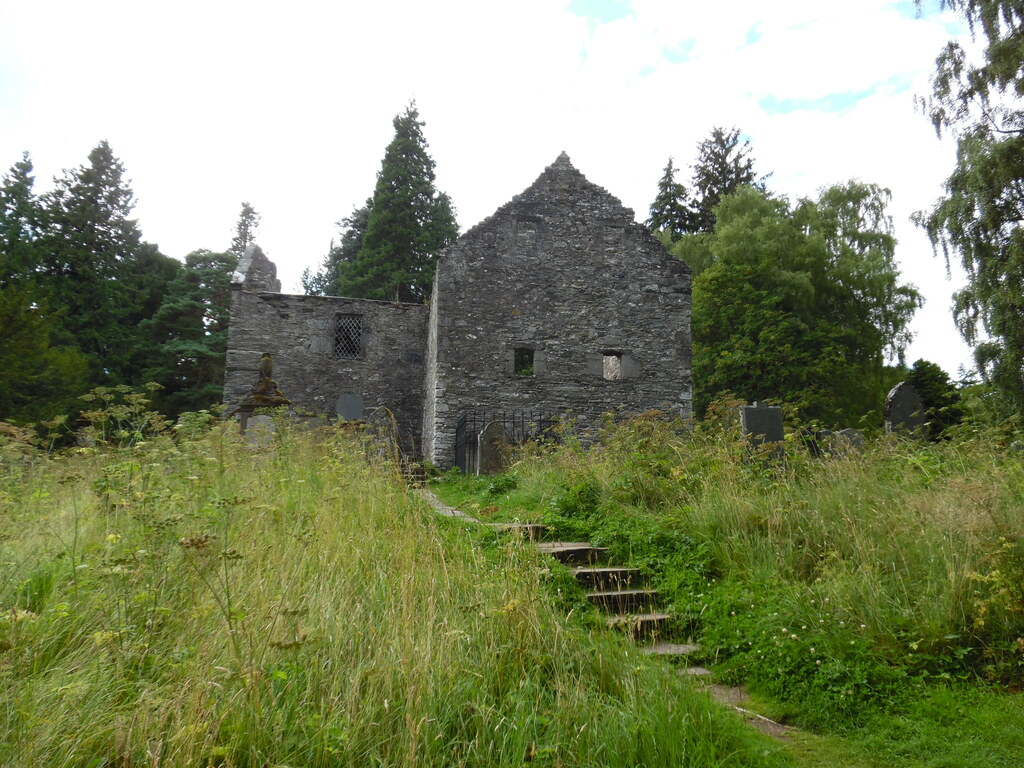
St Bride's Kirk, Atholl Estates
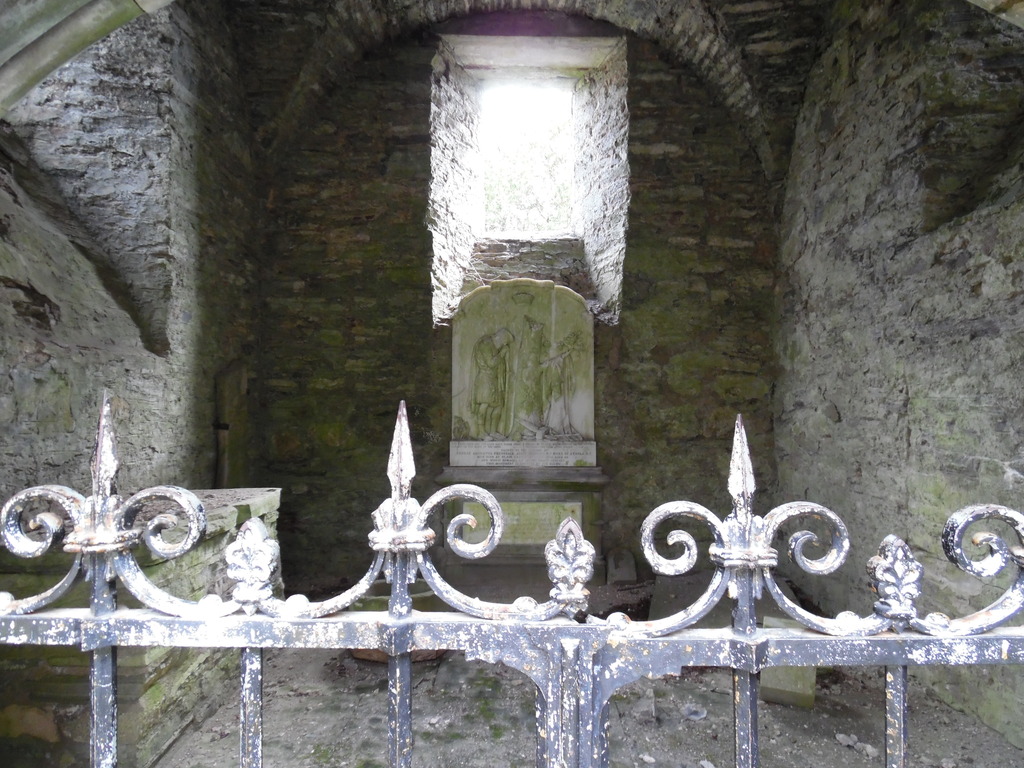
Inside St Bride's Kirk
EX LEANACH MISSION CHURCH, HIGHLAND FOLK MUSEUM
This colourful corrugated iron church was originally built in 1907 at Leanach near Inverness, for the Church of Scotland and the Free Church.
The Highland Folk Museum acquired it in the 1980s and moved it to their busy and popular one mile long open air museum which traces Highland Life from 1700 to the 1950s.
Here it is one of the first building visitors see when they arrive. Inside visitors can see an entrance porch, organ, pulpit and office.
Transport: 30 minutes' walk from Newtonmore train station.
See our Guide to the village of Newtonmore for more details about the rest of the museum as well as other places to visit in Newtonmore, accommodation and places to eat.
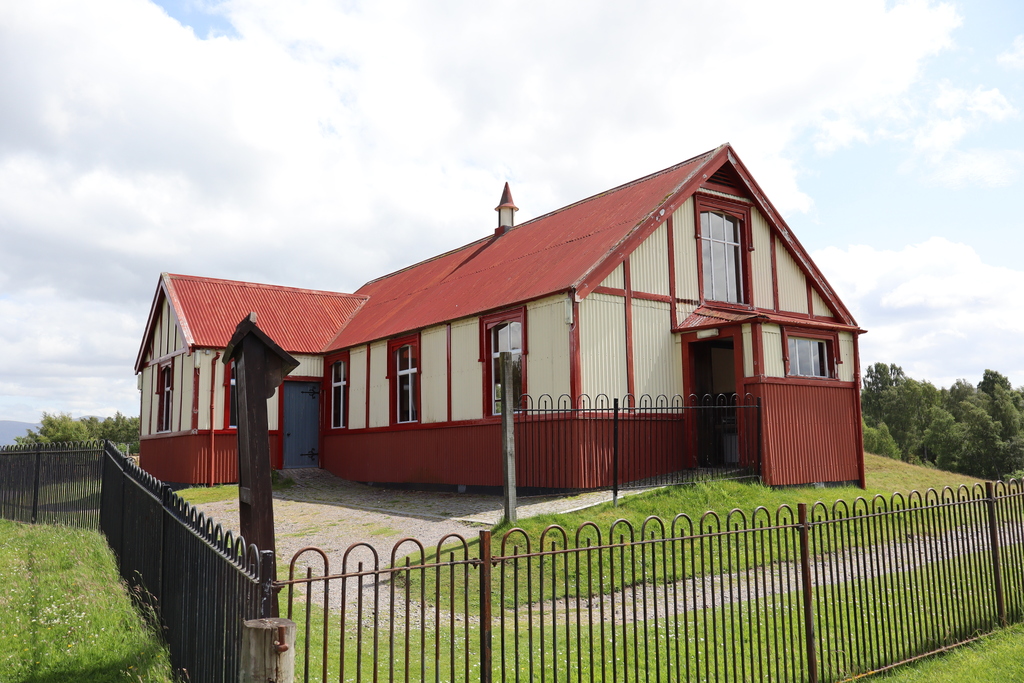
Ex Leanach Mission Church
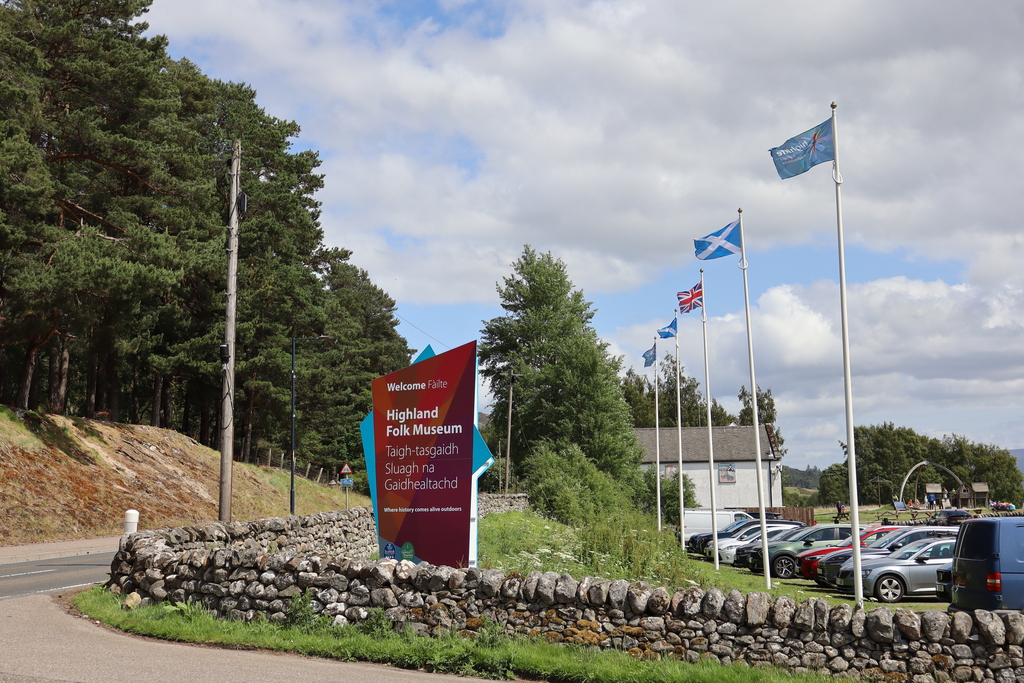
Entrance to Highland Folk Museum
See our Guides to the busy city of Inverness for other places to visit, as well as accommodation and restaurants.
The Cathedral is located opposite the Castle on the banks of the river. Built in the 1860s in the Gothic style, it was the first to be built in the UK after the Reformation. Inside, visitors can view pillars of polished Peterhead granite, stained glass, sculptures, and an angel font after Thorvalsden (Copenhagen).
Transport: 10 minutes' walk from Inverness train station.
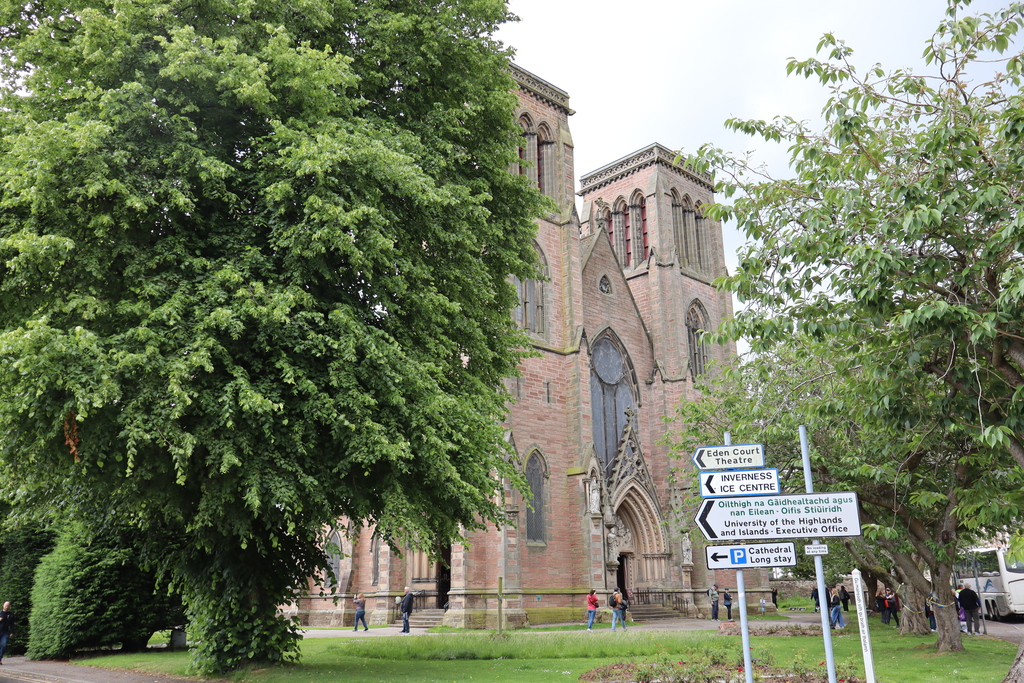
Inverness Cathedral north side
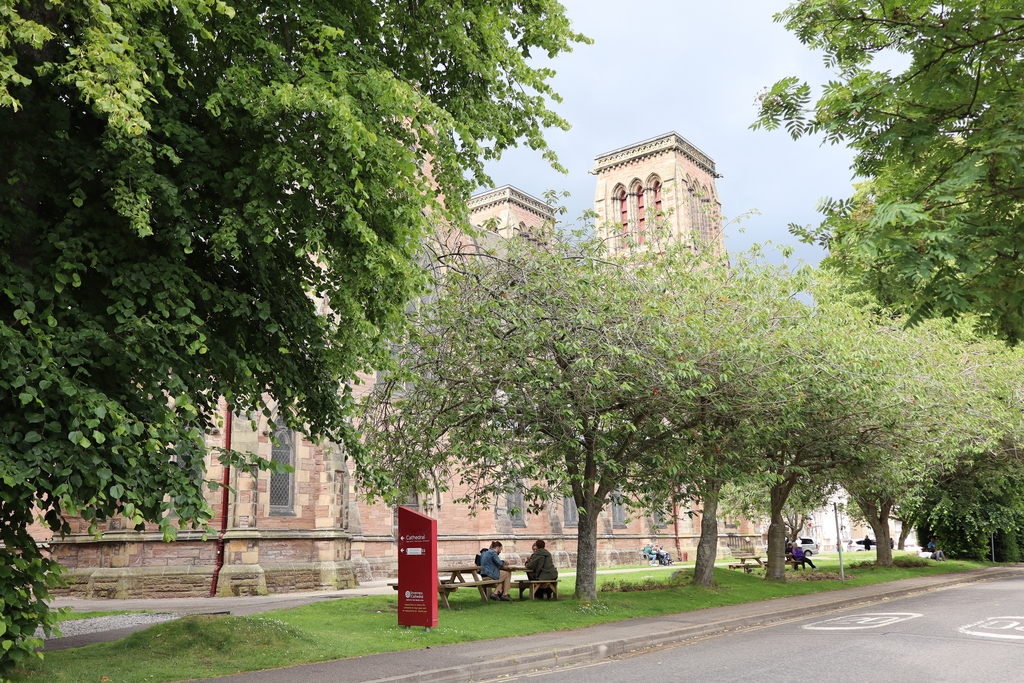
East side of the Cathedral
This is an attractive ruined cathedral made of red sandstone. It dates from the 1300s and is set in pleasant grounds, with nice buildings in the surrounding streets. You can be pretty sure of some nice photos here.
Transport: 25-25 minutes' bus journey from Inverness. See our Guide to Inverness to the Black Isle for details of this service, as well as where else to visit, accommodation and where to eat in Fortrose.
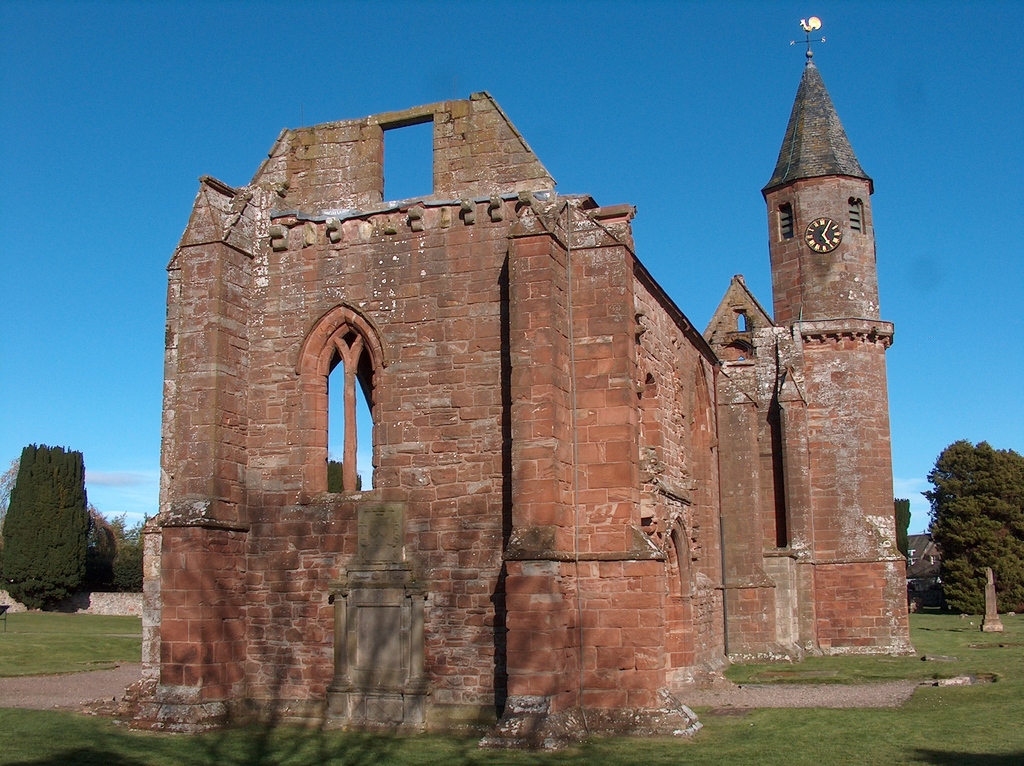
Fortrose Cathedral from the west end
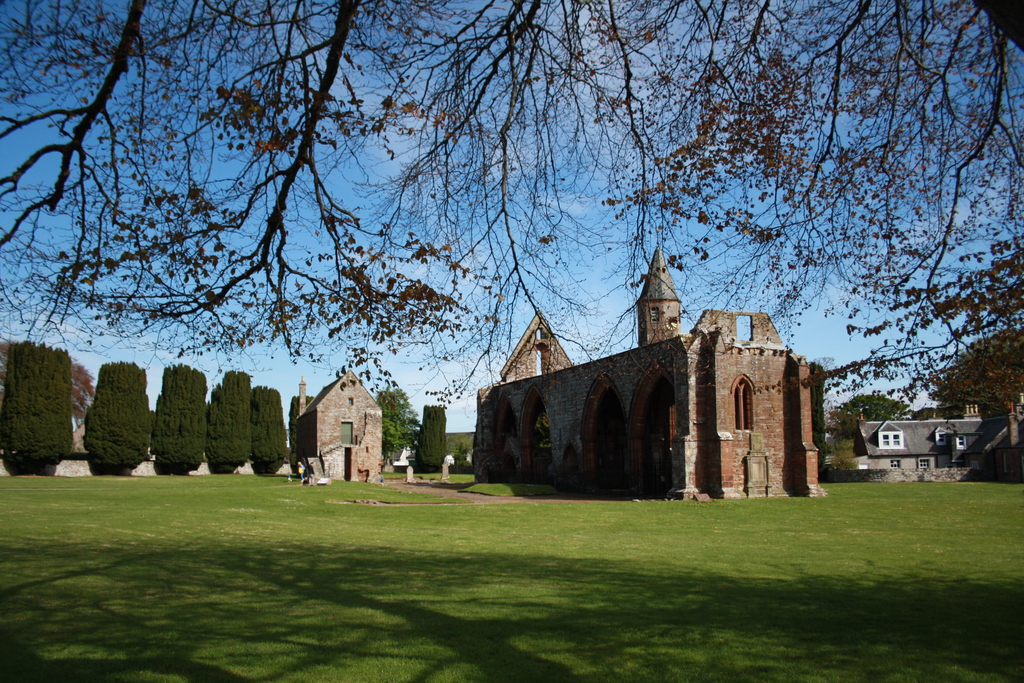
The grounds are nice to wander round
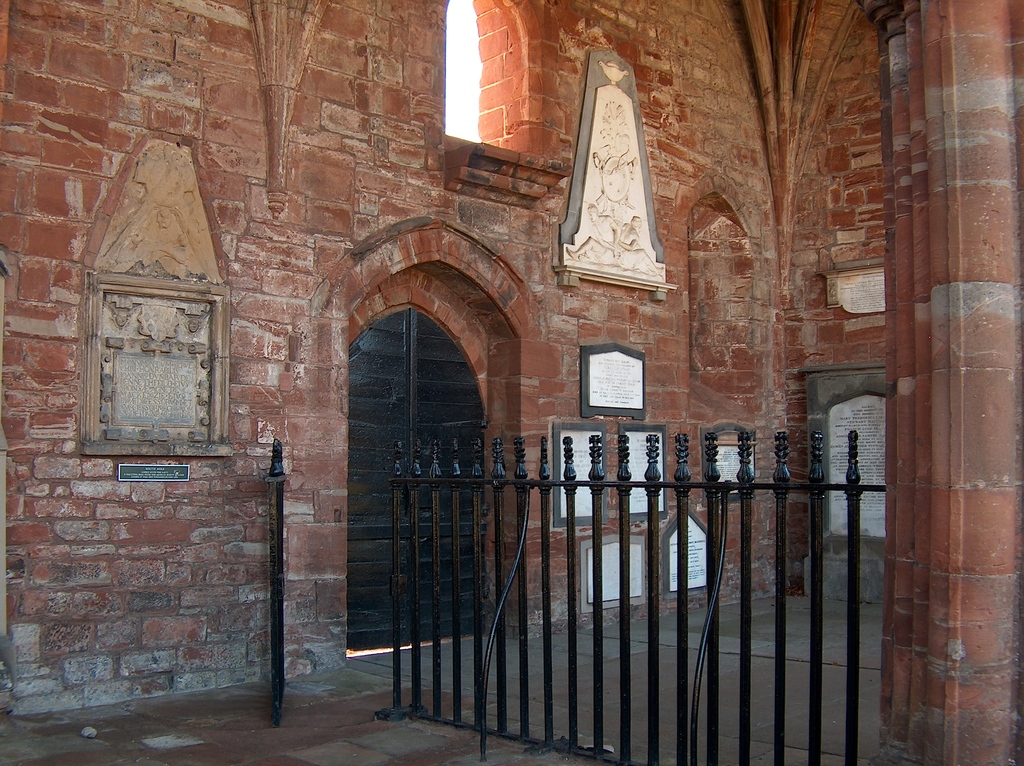
Cathedral interior
CROMARTY CHURCHES
Cromarty has four churches, only one of which is still in use and three of them you can visit.
East Church on Church Street is no longer in use but is open to visitors and has recently been refurbished. Along the road is St Regulus Church which is still in use and open for visitors.
Up the hill behind Church Street is the now roofless Gaelic Chapel which was in use for Gaelic services from 1783 to 1918, and for Roman Catholic Polish forces during World War II. It is possible to visit and see how it is gradually being taken over by nature.
Cromarty West Church closed in 2023 and is not possible to visit.
Transport: 50 minutes to 1 hour 10 minutes bus journey from Inverness. See our Guide to Inverness to the Black Isle for details of this service, as well as where else to visit, accommodation and where to eat in Cromarty.
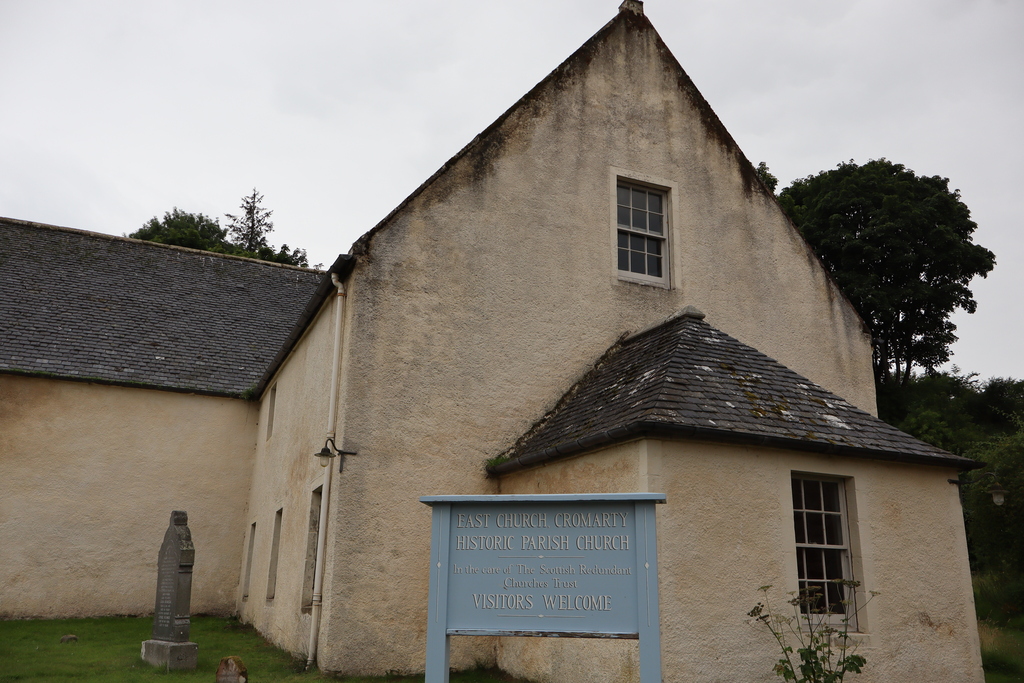
East Church
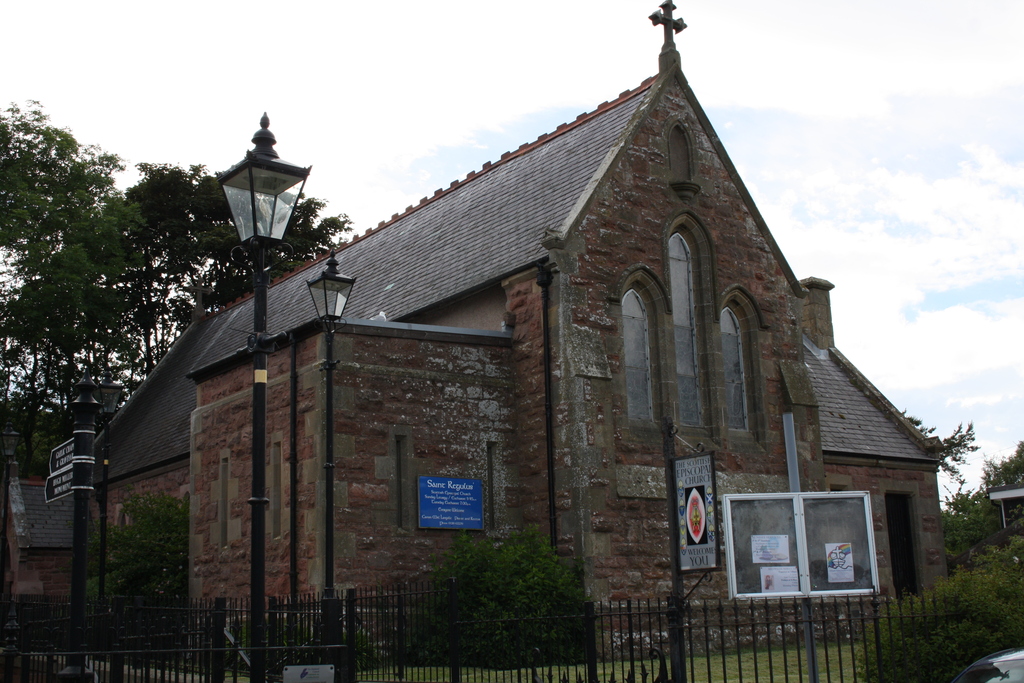
St Regulus Church
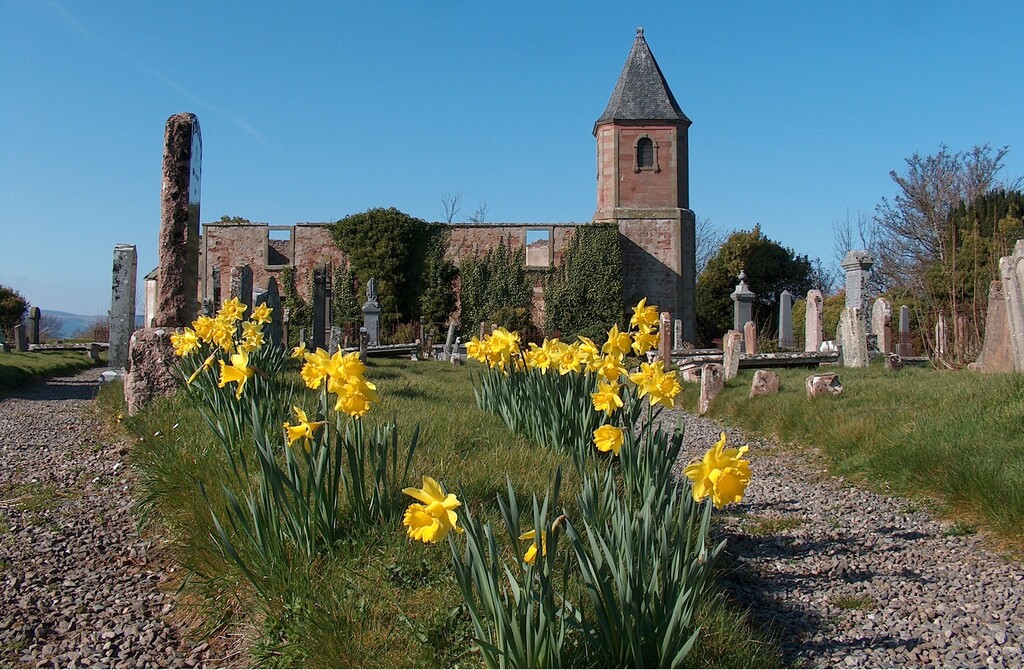
Gaelic Chapel
The Priory was founded around 1230 by monks from France. Today the building is a ruin, however most of the main chapel remains, if roofless.
The North Transept is the best preserved section and retains its roof to give an idea of how the structure would have looked when complete.
Transport: 15 minutes' walk from Beauly train station.
Don't miss our Guide to the popular village of Beauly for other places to visit, as well as accommodation and places to eat.
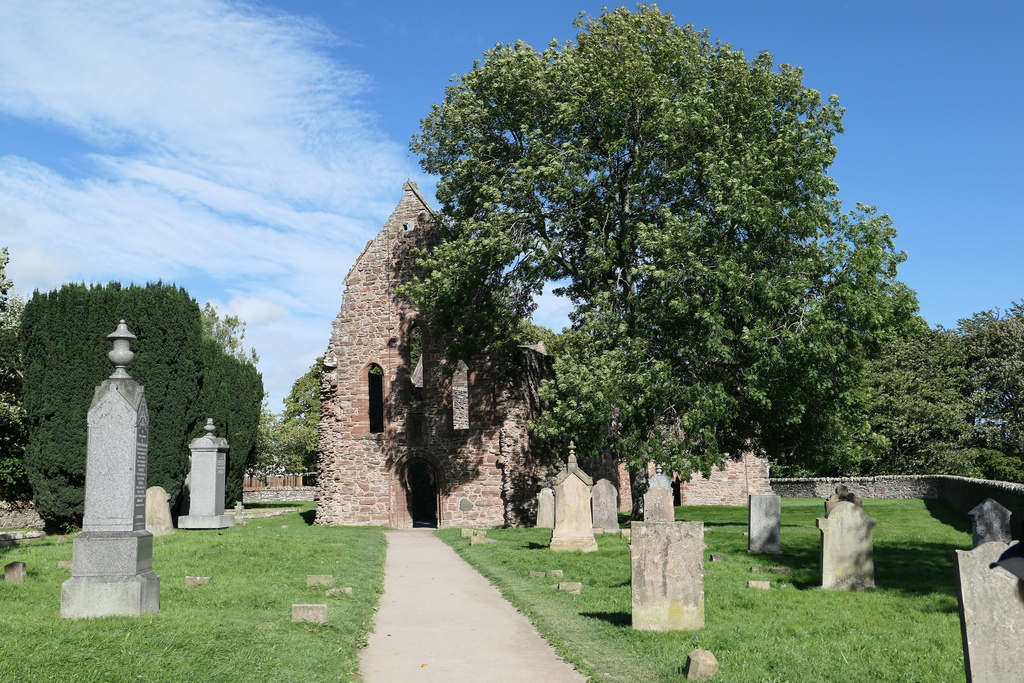
Entrance to the Priory, pretty in the sun
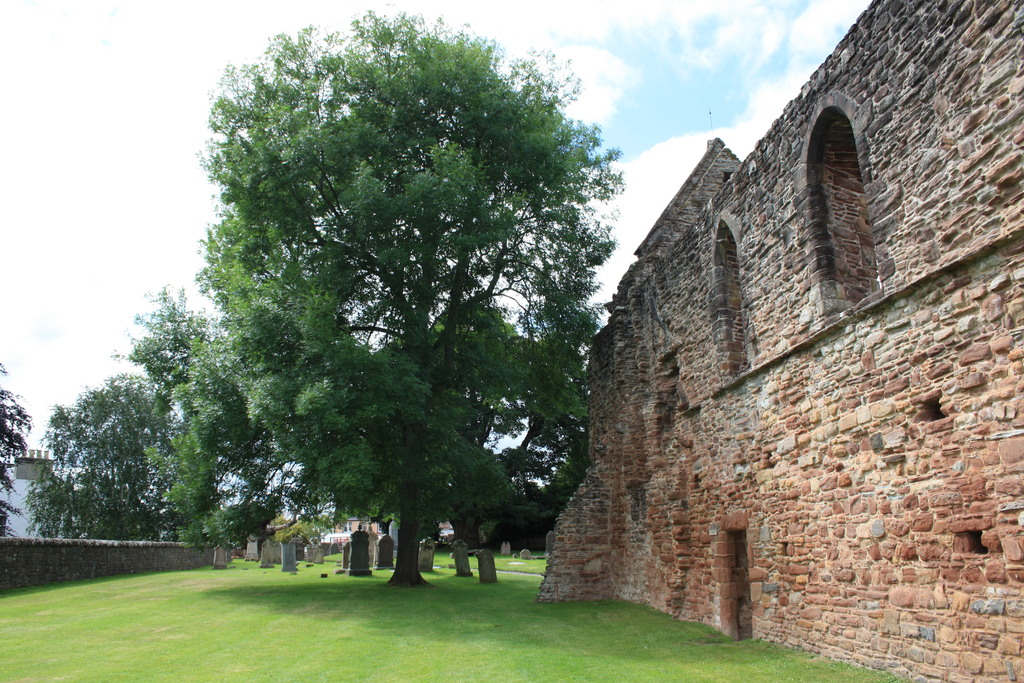
Priory from the south side
Known as 'The Lamp of the North', it dates from 1238 and was a monastery of Premonstratensian monks. It escaped being destroyed during the Reformation.
Transport: 40 minutes' walk from Fearn train station.
See our Guide to Far North Line Halts for more details about Fearn.
See our Guide to Tain and Dornoch for other places to visit, as well as accommodation and restaurants.
St Duthus Collegiate Church which dates from the 14th century. It used to be a place of pilgrimage for the remains of St Duthac until after the Reformation in 1560.
It fell into disrepair in 1815 but was later restored with impressive stained glass windows and has become a popular tourist destination. It is managed by the Tain & District Museum next door.
This museum has an impressive collection of local artifacts, including locally produced silverware from the 18th and 19th century and a collection of Clan Ross items.
Transport: 5 minutes' walk from Tain train station.
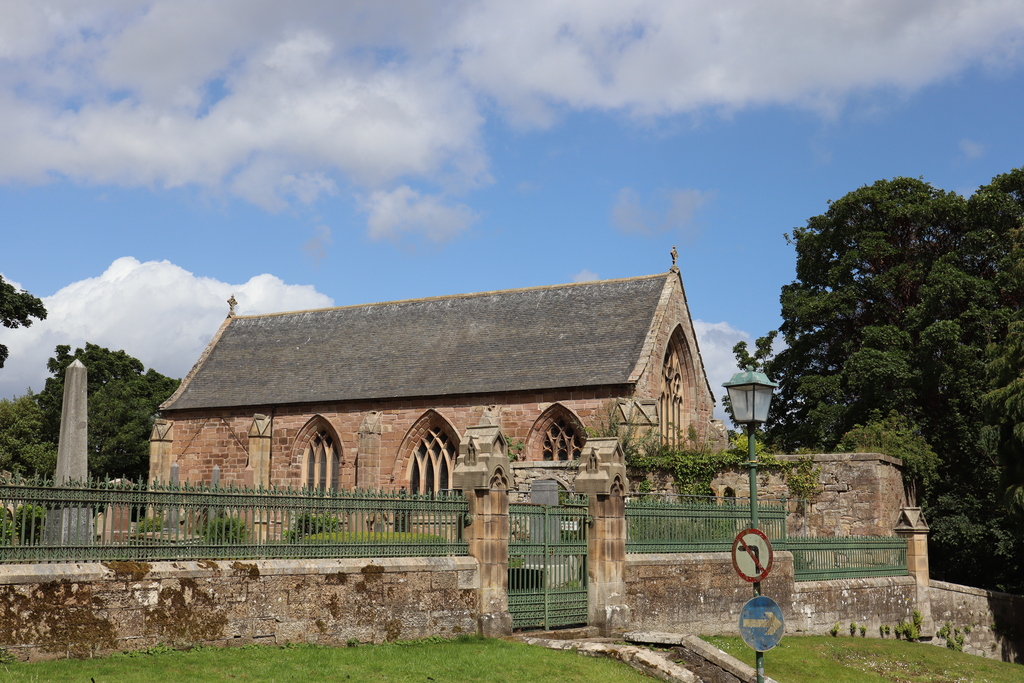
St Duthus Church
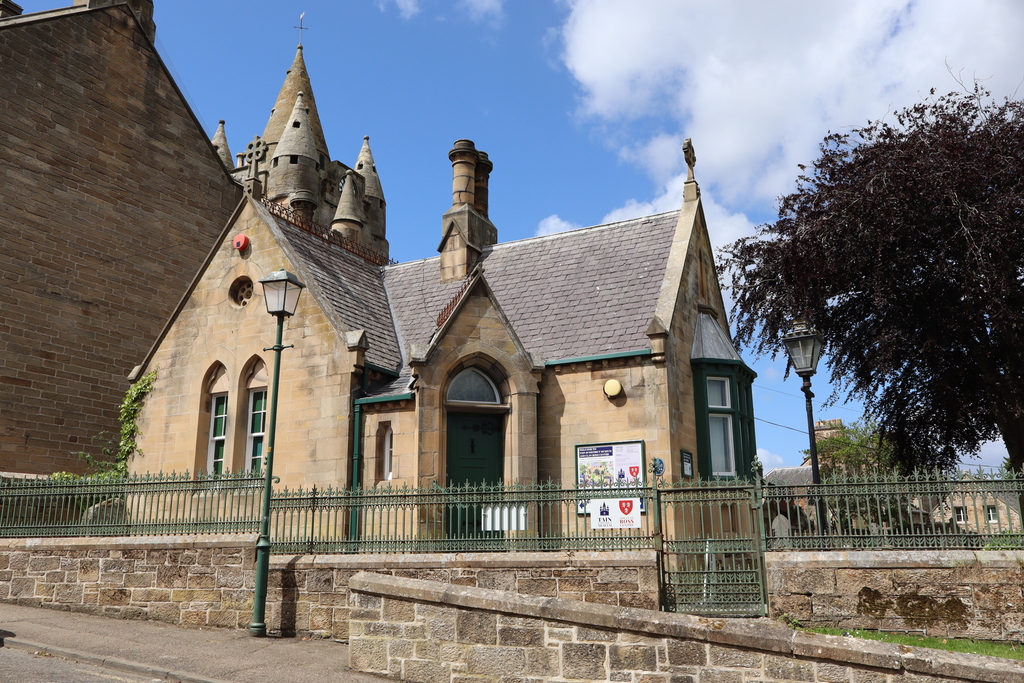
Tain and District Museum
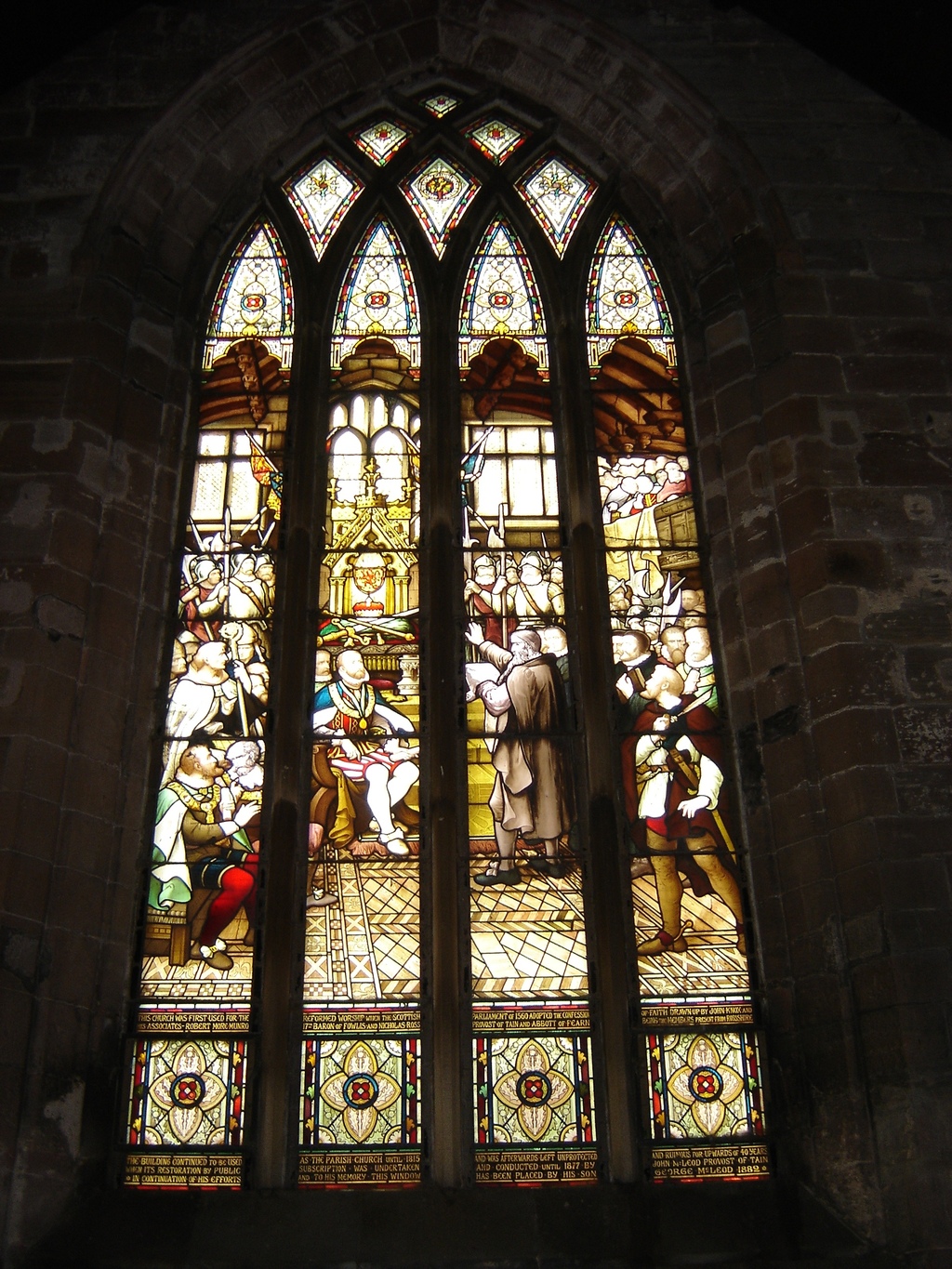
Stained glass window, St Duthus Church
A few minutes' walk from the museum on Chapel Road is this ruined chapel which was built in 1253 on the site of St Duthuc's birth. Robert the Bruce sent his wife and daughter here for safety but English forces burnt the chapel and took them to England.
Transport: 5 minutes' walk from Tain train station.
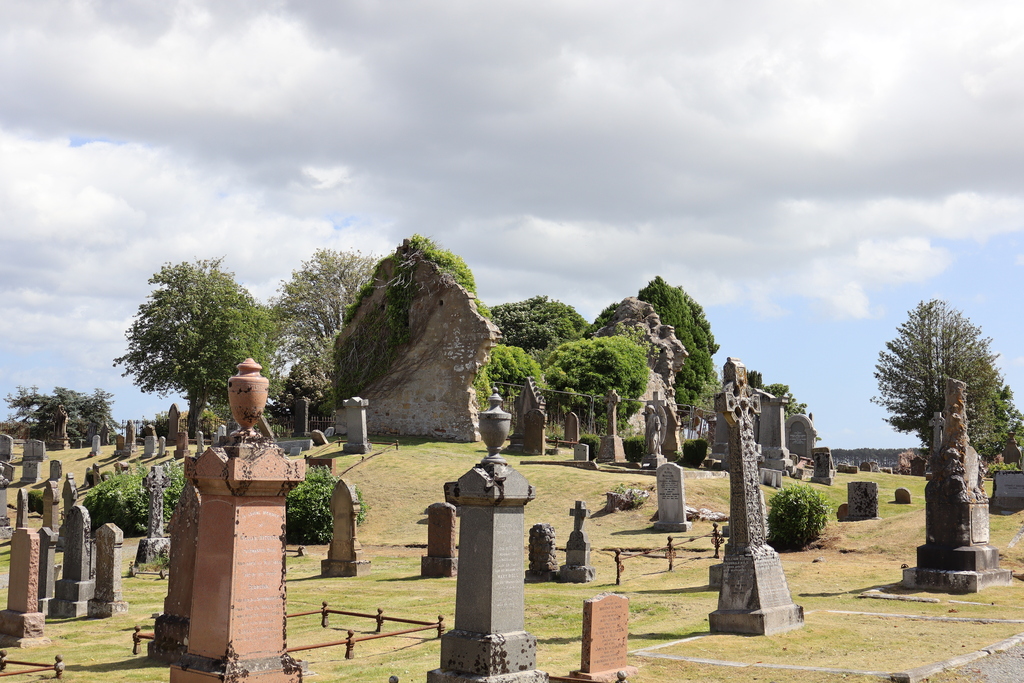
St Duthus Chapel
This is an impressive cathedral in the centre of the village, dating from 1239. It is usually open for visitors and has regular services held there, as well as special events such as concerts.
Its beautiful appearance both externally and internationally, together with the decorative stained glass windows make it a stunning building despite its comparatively small size for a cathedral.
Transport: 15 minutes' bus journey from Tain.
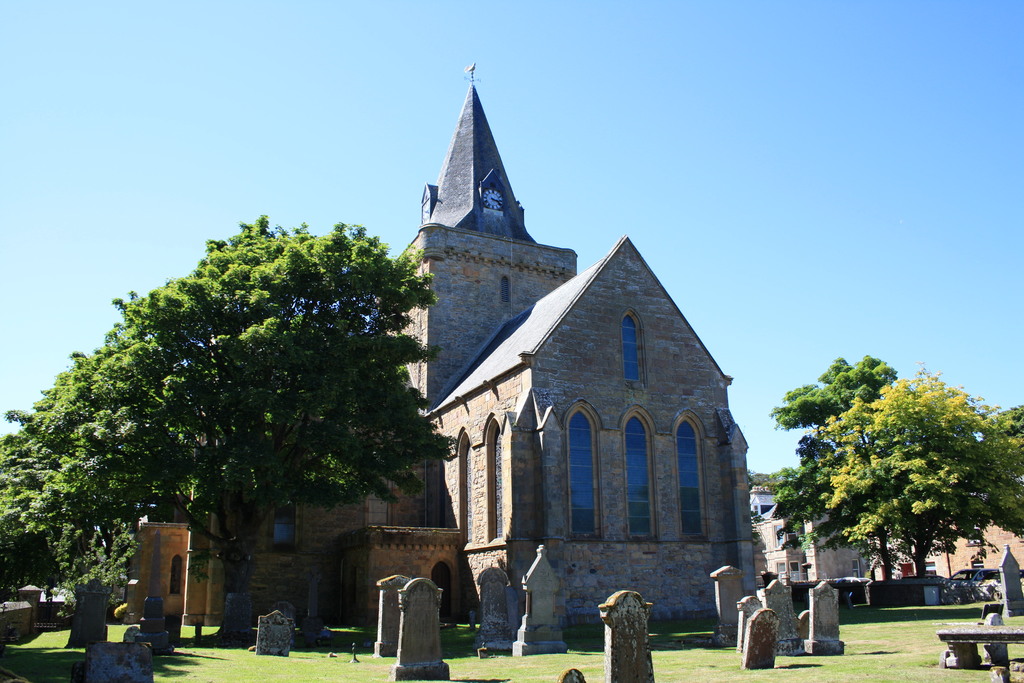
Dornoch Cathedral
Cyclists and keen walkers may also wish to alight at Ardgay to visit Croick. Some ten miles west of Ardgay along a narrow single track road is Croick Church. Building temporarily closed (September 2025).
The Church is a good example of a ‘parliamentary church’, constructed in 1823. Its simple white walls, plain glass windows and basic hard wooden benches have a certain appeal and remain timeless since its construction.
However, it became famous in 1845 when a Times newspaper reporter visited to expose a scandal that was representative of a shame which was sweeping the Highlands.
Eighty people were living in the churchyard under a home made tarpaulin having being evicted from their homes. Across the Highlands in hard conditions people lived as tenant farmers on small crofts practising subsistence farming.
However, landowners decided to displace them in favour of more profitable sheep grazing and so in the space of a few years cleared the Highlands of thousands of people who had lived in their homes for generations.
The names of those who sheltered at the church may still be seen as they etched their details into the glass panes of the windows providing us today with a tangible link with these people.
These clearances became known as the ‘Highland Clearances’ and are still remembered as one of the most shameful episodes in Scotland’s history.
Transport: 3 hours 45 minutes' walk from Ardgay train station.
See our Guide to Far North Line Halts for more details about Ardgay.
Following the Disruption of 1848, when the Free Church of Scotland split from the Church of Scotland, there were various open-air preaching sites set up as members no longer had access to church buildings.
The site at Plockton was unusual in being of a more formal and permanent construction than many. It is located on Innes Street, halfway between the train station and the village.
Transport: 10 minutes' walk from Plockton train station.
Don't miss our Guide to the picturesque village of Plockton for other places to visit, as well as accommodation and places to eat.
The present church is the to occupy the site; previously there was a medieval and then a 17th century church. It is gothic in style and dates from 1810, however, the graveyard contains medieval graveslabs dating from the 14th to 15th centuries.
Transport: 15 minutes' walk from Dalmally train station.
See our Guide to the Tyndrum Lower to Connel Ferry section of the line for more details about Dalmally.
This church is an architectural feast, mixing an impressive range of styles. Features include the cloisters, a Norman archway, stone carvings, and stained glass windows. During the summer there is a part-time tearoom.
Transport: 15 minutes' walk from Loch Awe train station.
See our Guide to the Tyndrum Lower to Connel Ferry section of the line for more details about Loch Awe.
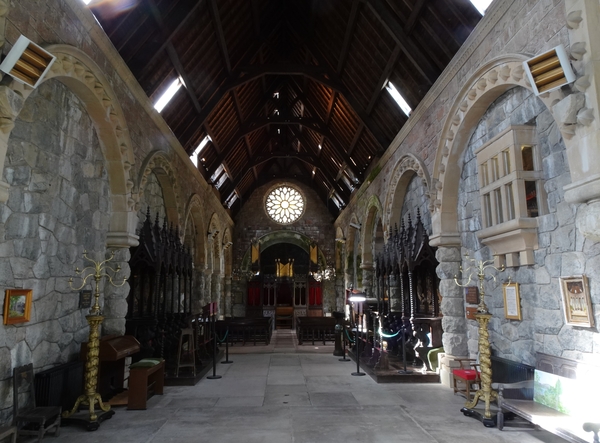
St Conan's Kirk chancel
Photo credit: “St Conan's Kirk chancel” by Phil Gayton, CC BY 2.0
See our Guide to the attractive town of Oban, seafood capital of Scotland and gateway to the isles, for other places to visit, as well as accommodation and restaurants.
NEARBY DUNSTAFFNAGE CASTLE AND CHAPEL
The ruined 13th century Dunstaffnage Chapel is set apart from the castle, among the trees. The castle is located in nearby Dunbeg overlooking Firth of Lorn. It is one of Scotland’s oldest stone castles, built in the 13th century for the powerful MacDougalls.
It was besieged by Robert the Bruce around 1308 and in 1746 held Flora MacDonald for a few days after her arrest for helping Bonnie Prince Charlie escape.
The Northwest tower is currently closed (October 2025).
Transport
Option 1: Alight at Connel Ferry train station. Then 5 minutes' bus journey from Connel Ferry to Dunbeg followed by a 20 minute walk.
See West Coast Motors services 405, 408 and 415 and alight at stop 'Road End', and also their service 918 (tickets for this service bookable through Citylink).
Also see the Citylink Glasgow to Oban service (numbers 975, 976, 977, 978).
See our Guide to the pretty village of Connel Ferry for other places to visit, as well as accommodation and restaurants.
Option 2: Alight at Oban train station. Then 10 minutes' bus journey from Oban to Dunbeg followed by a 20 minute walk. See West Coast Motors service 005 and alight at stop 'MacCallum Court'.
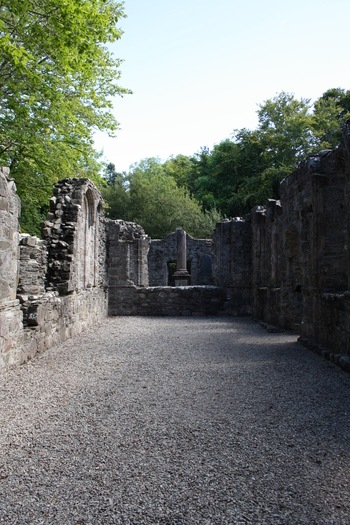
Dunstaffnage Chapel
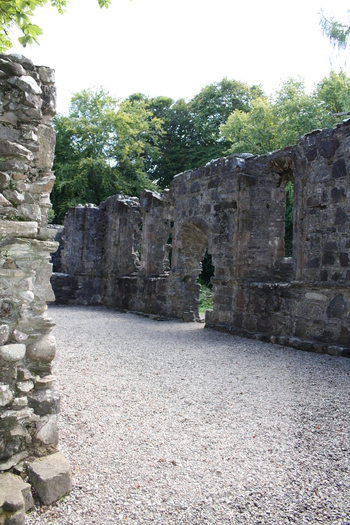
Dunstaffnage Chapel
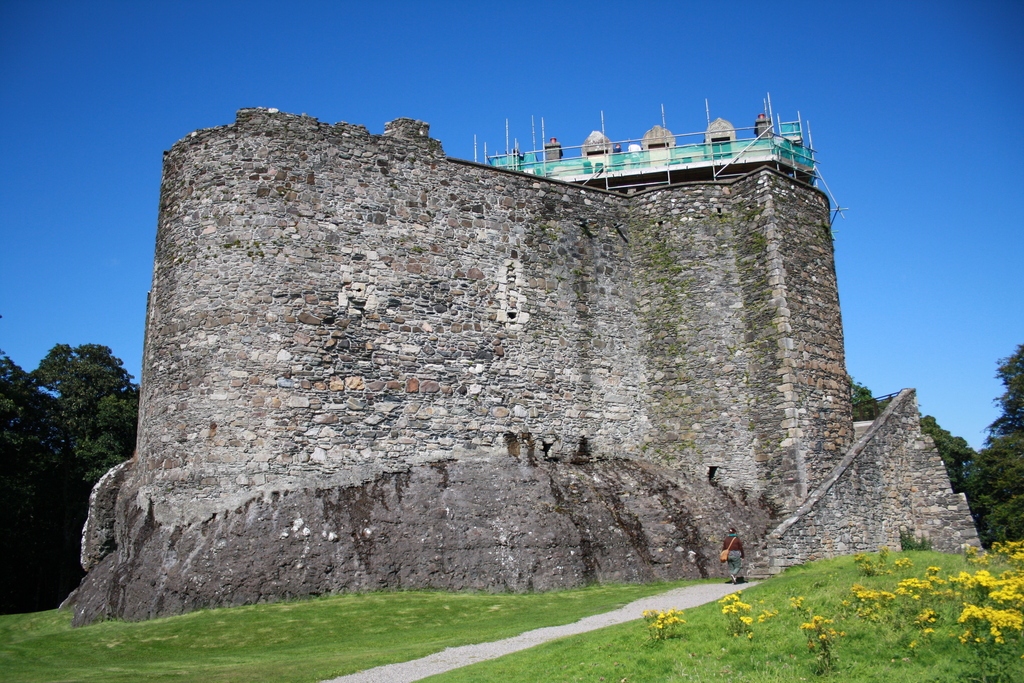
Dunstaffnage Castle
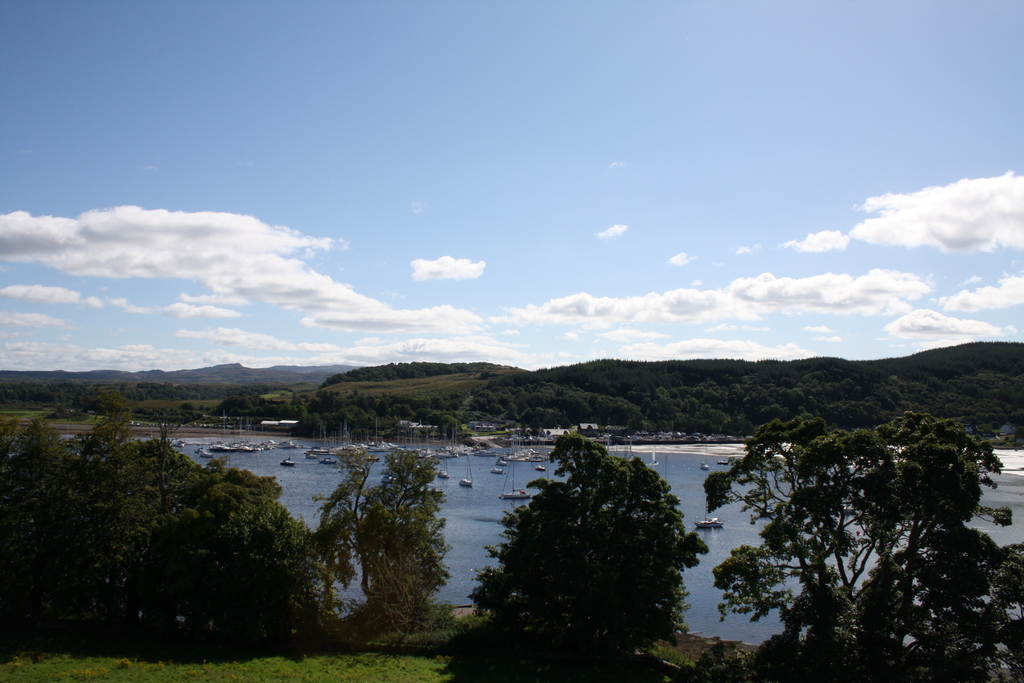
Dunstaffnage Marina from the castle
Work on this interesting building finished when funds were exhausted in 1910. By then only the sanctuary, chancel, one transept and one bay of the nave were completed.
This was knitted in to the existing building. However, the existing building was twelve foot lower than the Sanctuary, and orientated at right angles to the new structure, which had to be buttressed by remarkable riveted girders.
Two major campaigns to rebuild or complete the building have not been successful. One, the famous Oban Cathedral Fund Appeal run from Staten Island, New York, foundered in the Crash on Wall Street.
The other, led by two Highland Chiefs, only raised funds sufficient to improve the existing structure, including the creation of the narthex.
Transport: 10 minutes' walk from Oban train station.
This Gothic style church contains a memorial to Bonnie Prince Charlie. Also located here are the headstones of the MacDonald family, who the Prince stayed with prior to the 1745 Jacobite Rising.
Transport: 10 minutes' walk from Glenfinnan train station.
See our Guide to the popular hamlet of Glenfinnan for other places to visit, accommodation and places to eat.
Fort George is a historic military fort which is also currently still occupied by the British Army, who are due to leave by 2032.
Visitor access is managed by Historic Environment Scotland and your entrance ticket includes the independent Highlanders' Museum on site. We have enjoyed visiting here many times.
The Fort was built in the 18th century following the Battle of Culloden in 1746. This large site has much to see including walking the ramparts (look out for dolphins from here), the grand magazine which held gunpowder barrels, barracks and chapel.
The chapel was built in 1767. It has a two-tiered arcade and three-decker pulpit.
There are two cafes on site. We recommend the one within the Army buildings over the Historic Scotland one.
SAVING! You can get 25% off entry when you arrive car-free (book online with code GOOD25 and show your bus/train ticket or bike on arrival).
Transport: 15 minutes' bus journey from Inverness Airport railway station to the village of Ardersier - see Stagecoach service 11. From Ardersier it is just over a mile walk along the coastal path to reach Fort George.
See our Guide to Inverness Airport for more places to visit, accommodation and places to eat.
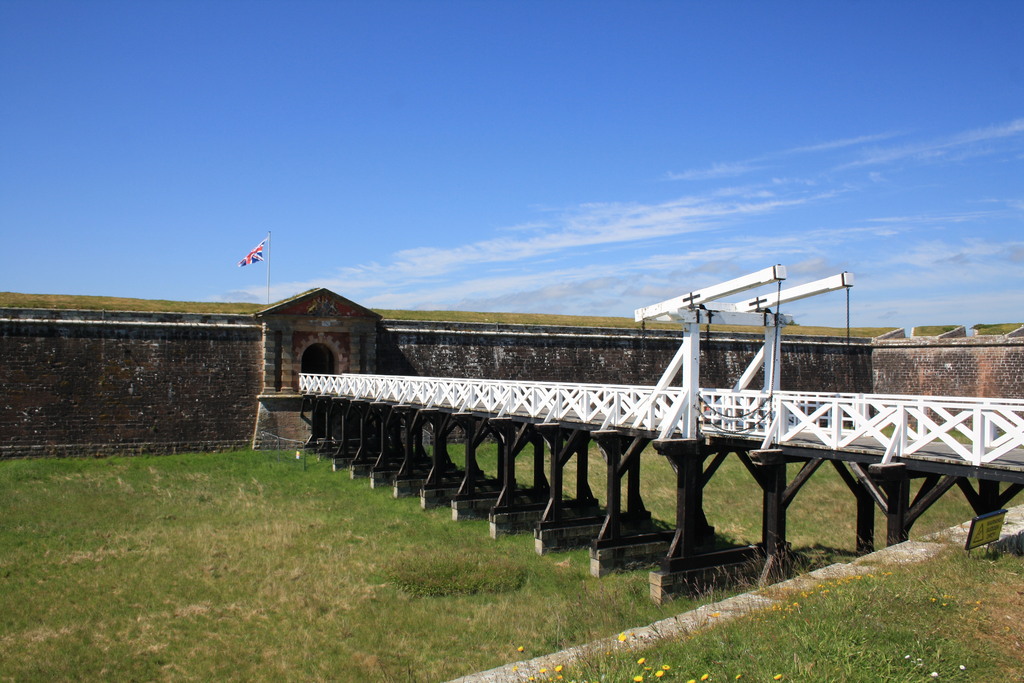
Entrance to Fort George
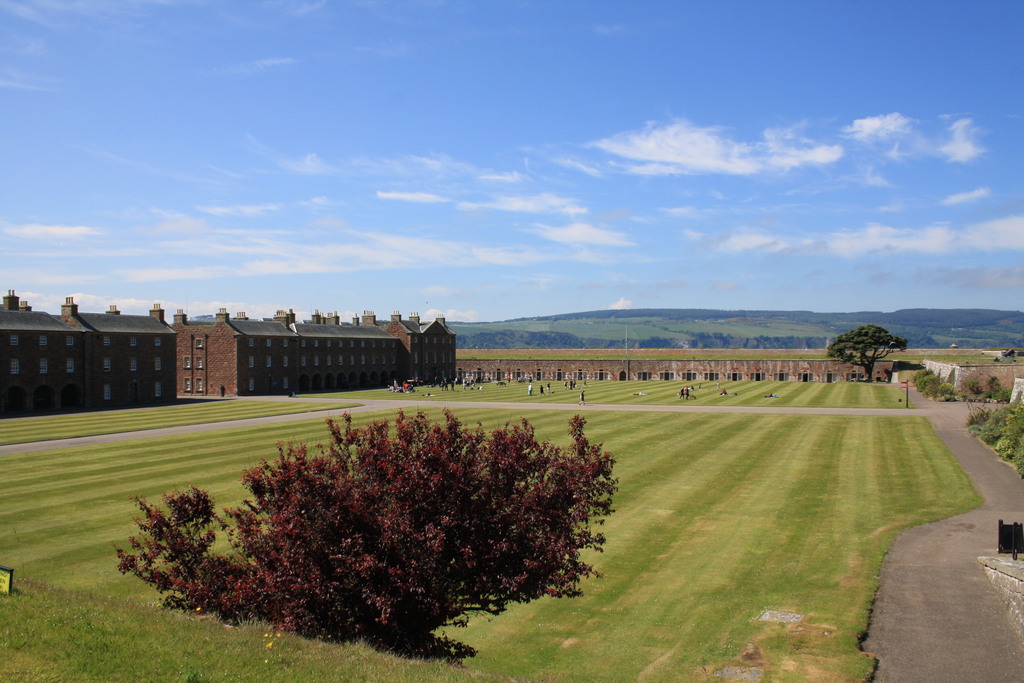
The site is around 42 acres in size
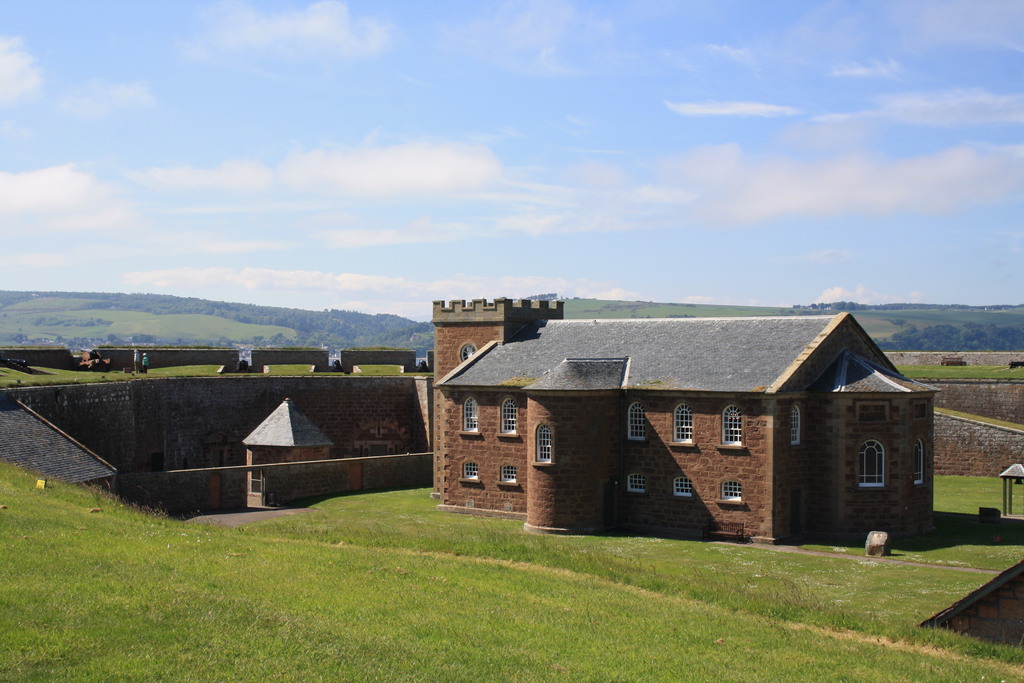
The chapel with ramparts in the background
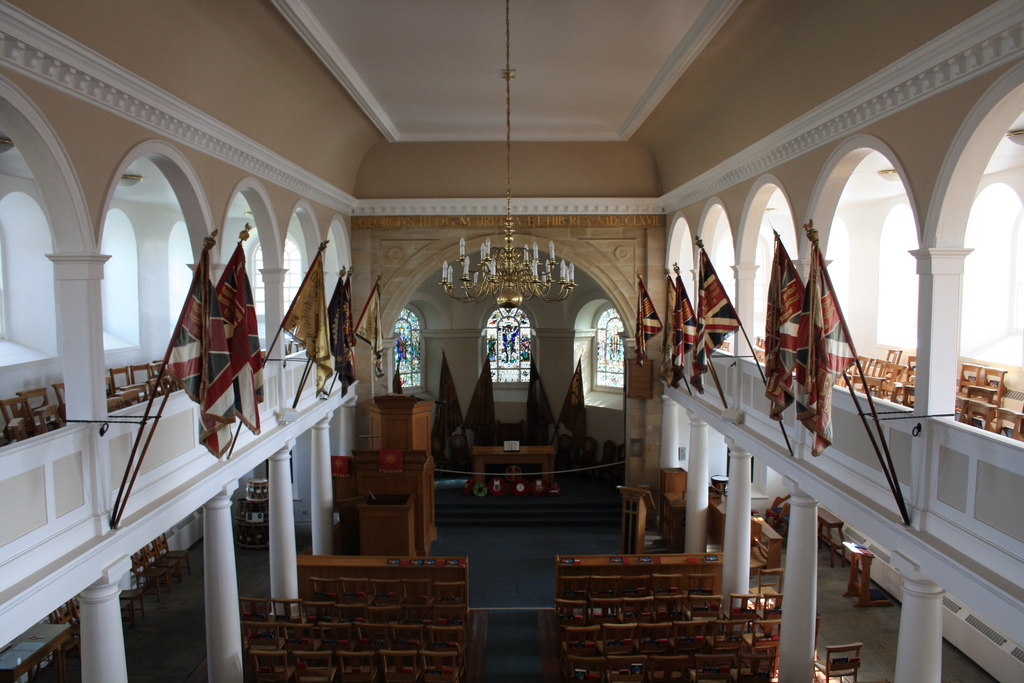
Inside the chapel
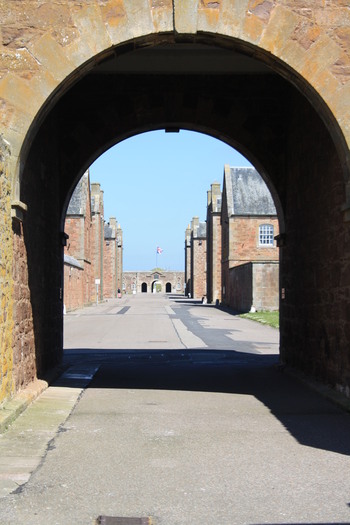
Historic Scotland and the Army both use the buildings
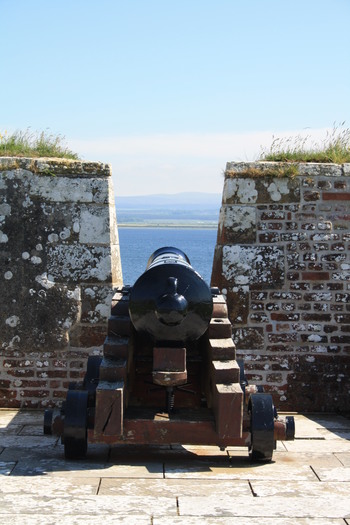
There are many cannons on the ramparts
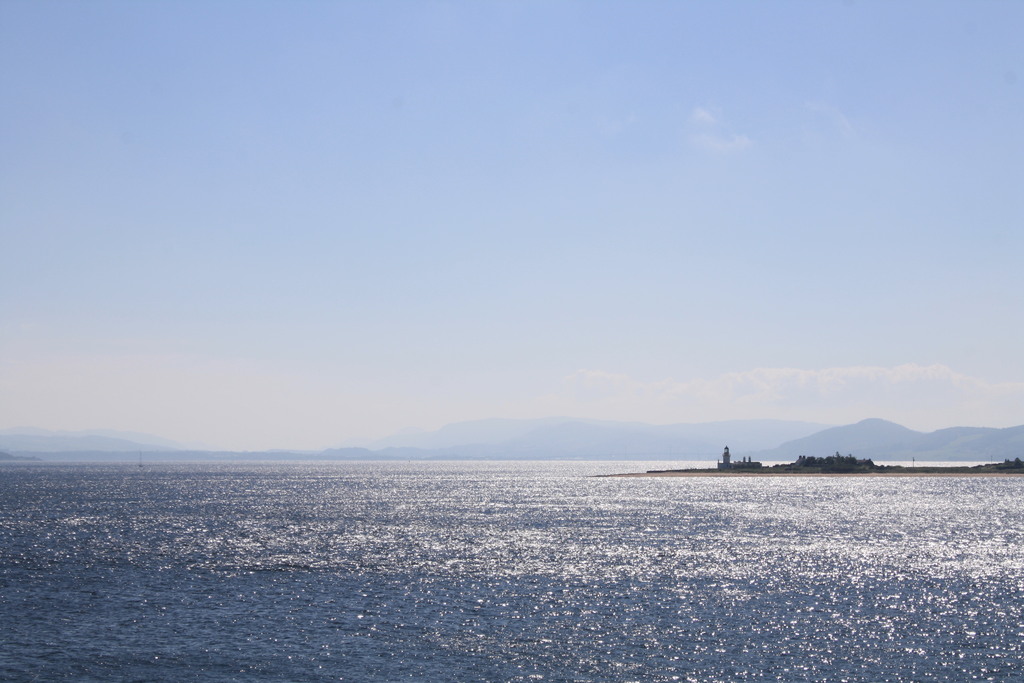
Dolphins are regularly spotted from the ramparts
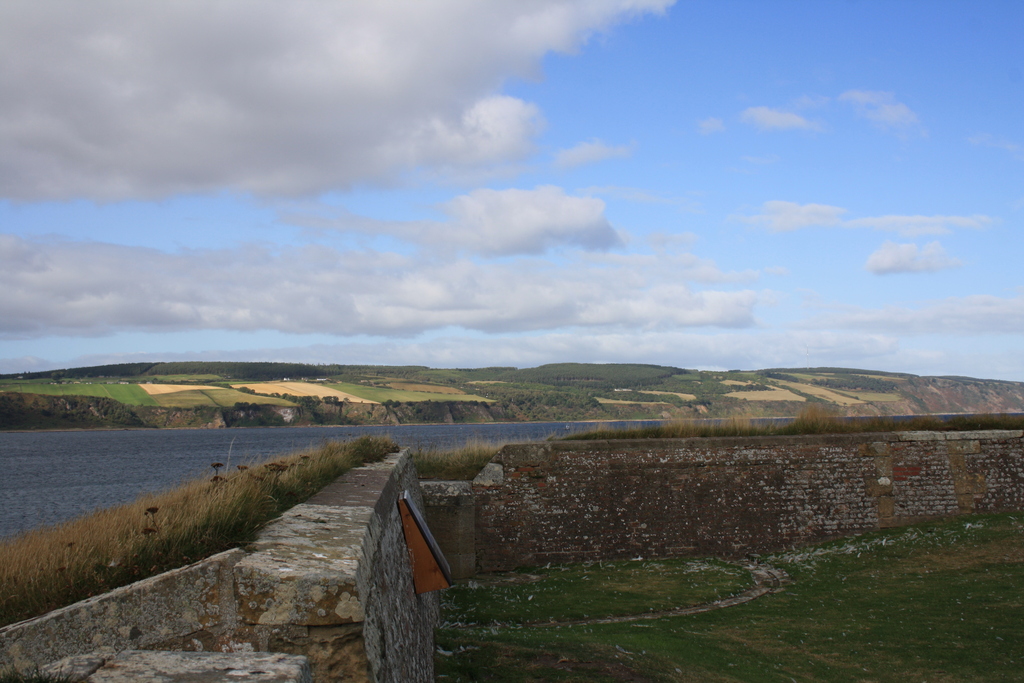
The ramparts have amazing views over the Black Isle and Moray Firth
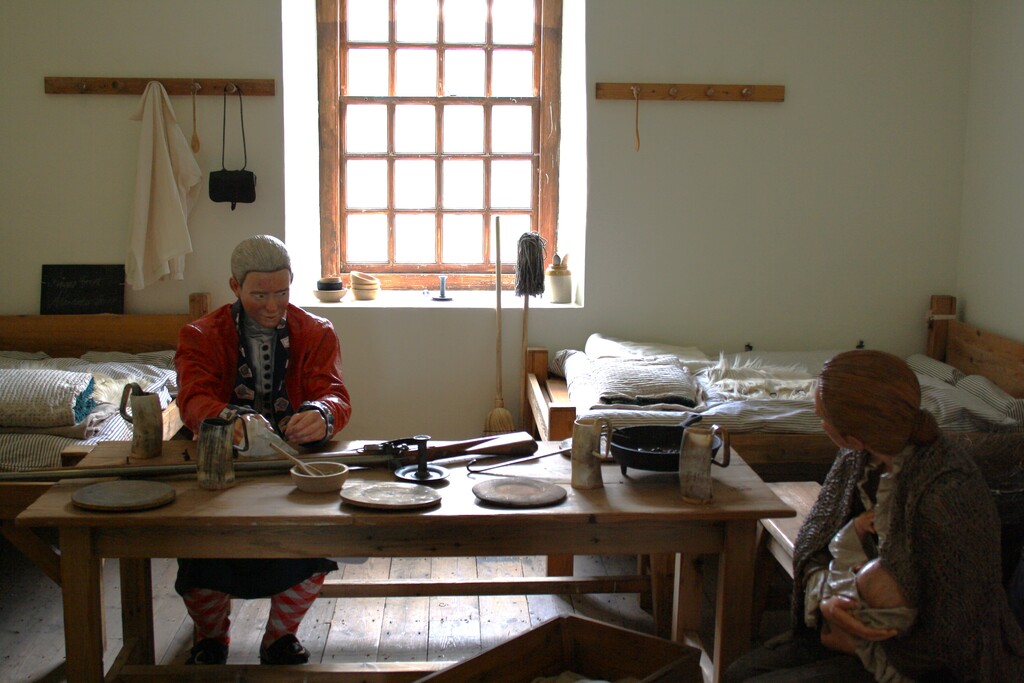
Historic barracks show military life
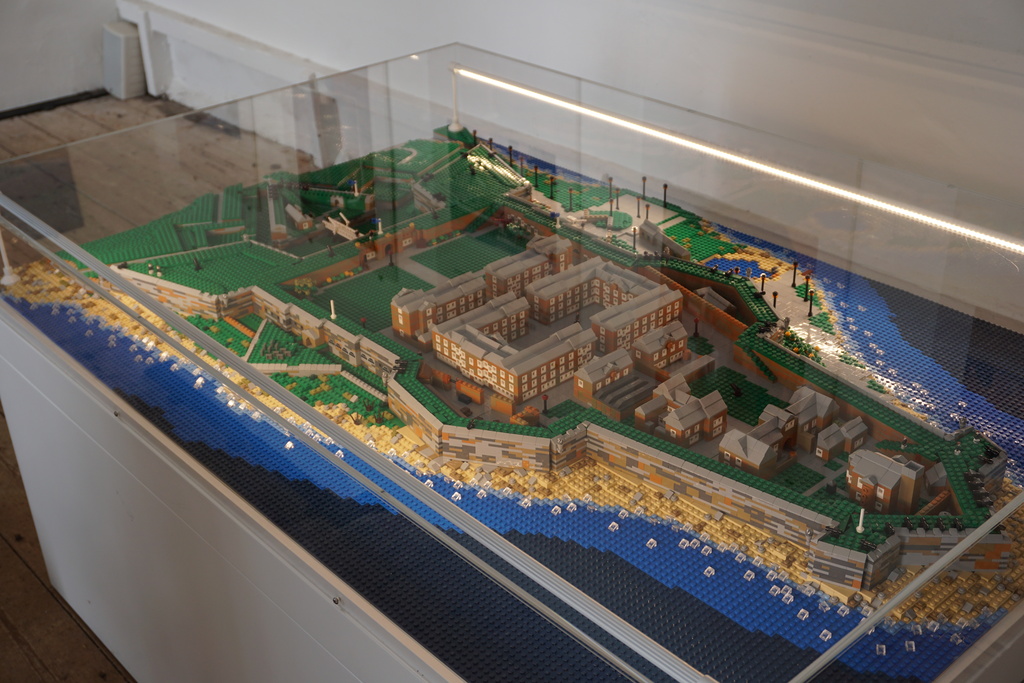
Lego model of the fort
NEARBY KINLOSS ABBEY, KINLOSS
The now ruined Kinloss Abbey was built by King David in 1150. It was the largest Cistercian Monastery in the north of Scotland. It is possible to visit the Abbey.
The next door ruined Abbot’s House was occupied by Robert Reid, a local bishop, lawyer and diplomat. It is not possible to visit.
Transport: Alight at Forres train station. 5 minutes' bus journey from Forres - see Stagecoach service 32. For Kinloss Abbey alight at at stop 'Kinloss, opp Glebe Road' followed by 5 minutes' walk.
See our Guide to Forres for more places to visit, accommodation and restaurants.
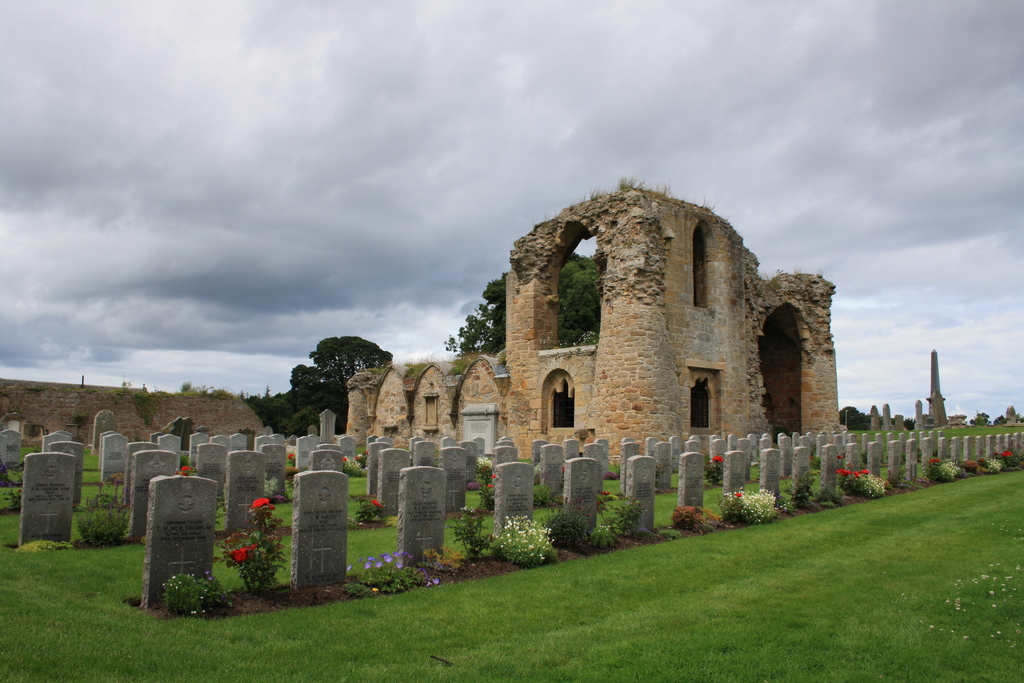
Kinloss Abbey
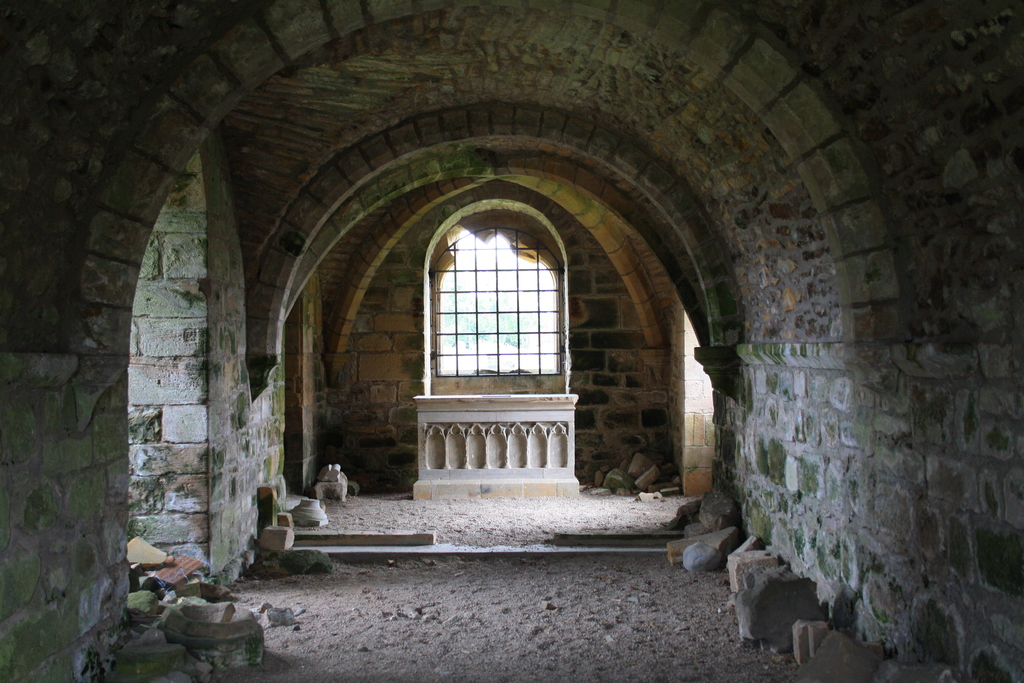
Kinloss Abbey inside
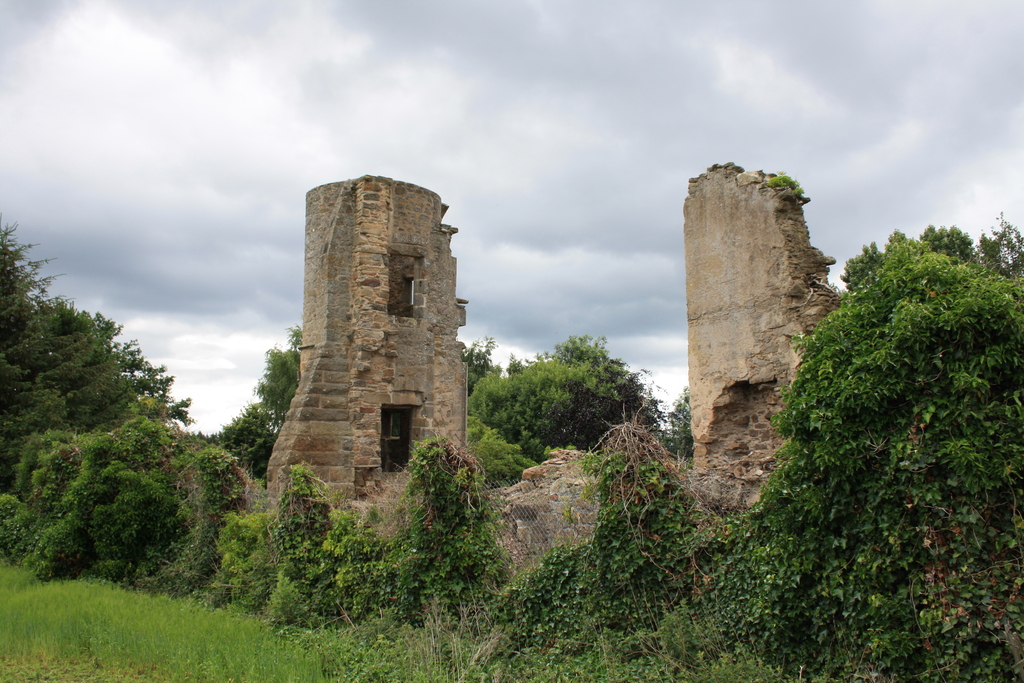
Abbot's House
The Cathedral is a ruin, but don’t let this put you off a visit to this amazing building. The Cathedral was founded in 1224 and rebuilt after a fire in 1340.
The remaining sections are more complete than St Andrews and contain some richly decorated stonework.
The best preserved parts of the Cathedral are the chapter house and two west towers. The chapter house is still roofed and glazed and gives a true reflection of what the entire building would have looked like when complete.
The west towers still stand over the entrance to the Cathedral and are for the most part intact. Visitors may climb the stairs to the top to obtain fine views over the town.
The rest of the cathedral has not fared so well. The neglect began after the Reformation. In 1711 long before conservation efforts began the central tower collapsed causing considerable damage to the main portion of the Cathedral.
SAVING! You can get 25% off entry when you arrive car-free (book online with code GOOD25 and show your bus/train ticket or bike on arrival).
SAVING! Joint ticket with Spynie Palace is available.
Transport: 20 minutes' walk from Elgin train station.
See our Guide to Elgin for more places to visit, accommodation and restaurants.
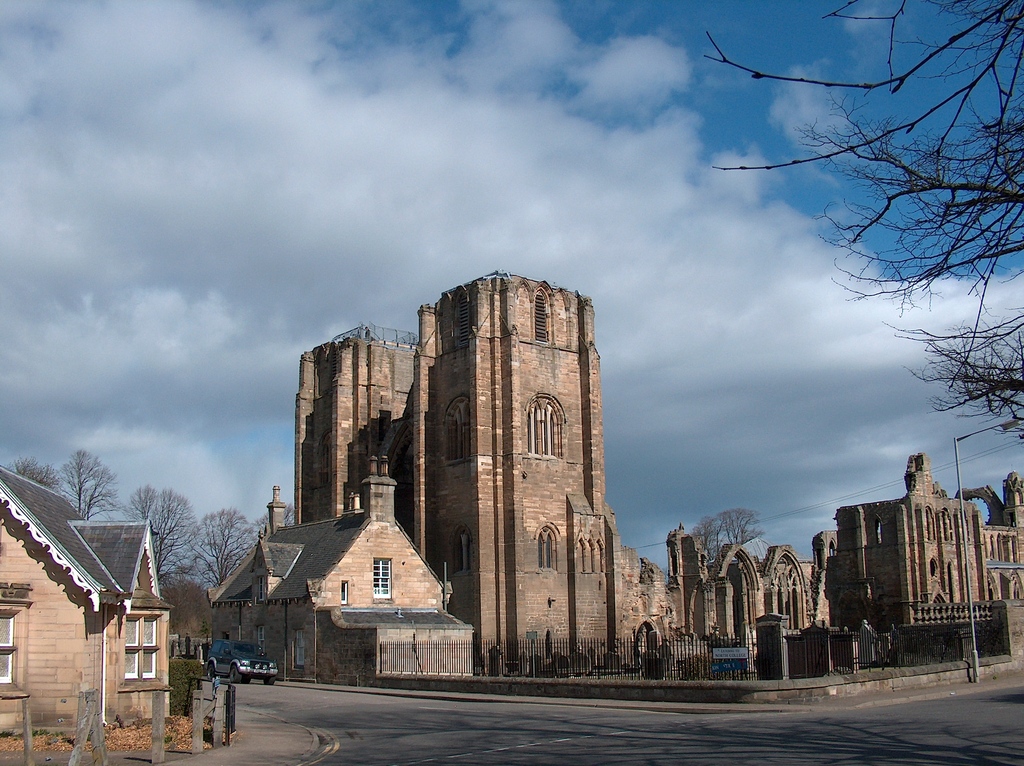
Elgin Cathedral
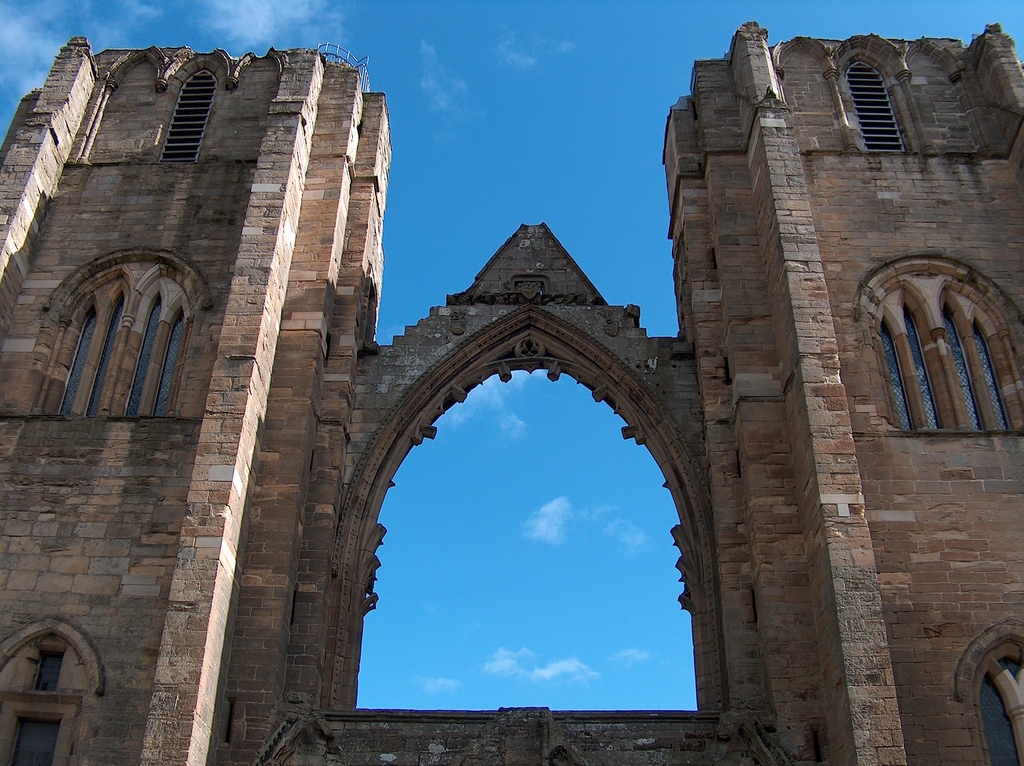
The imposing west towers
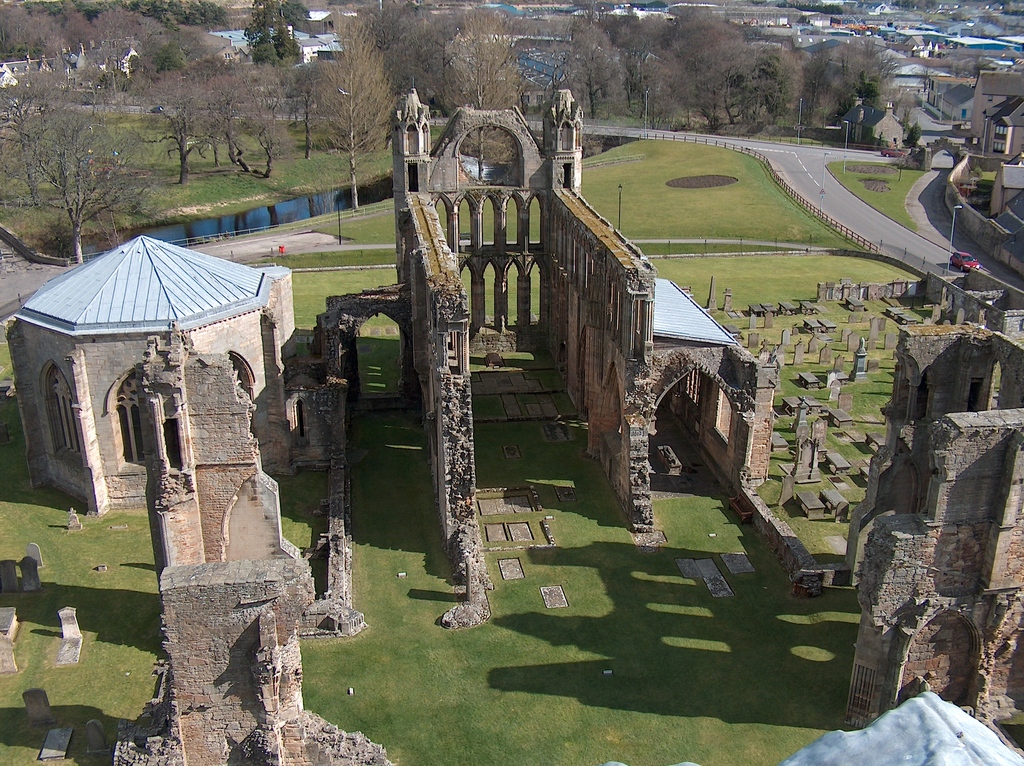
View from top of west towers
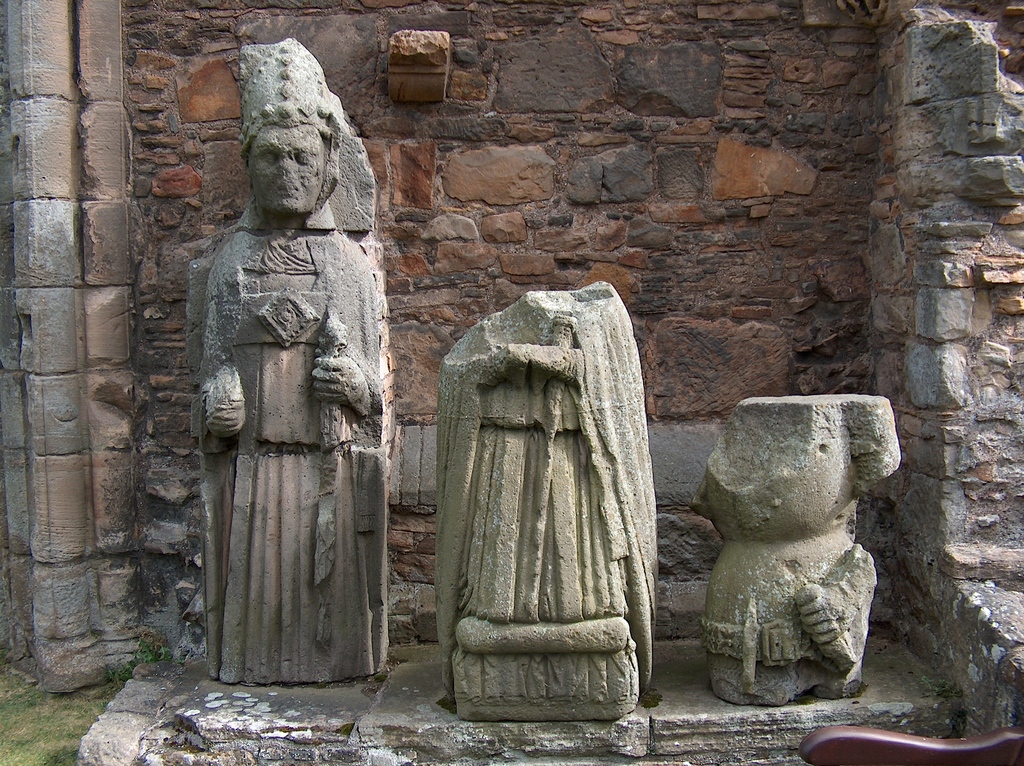
There are many stone statues around the site
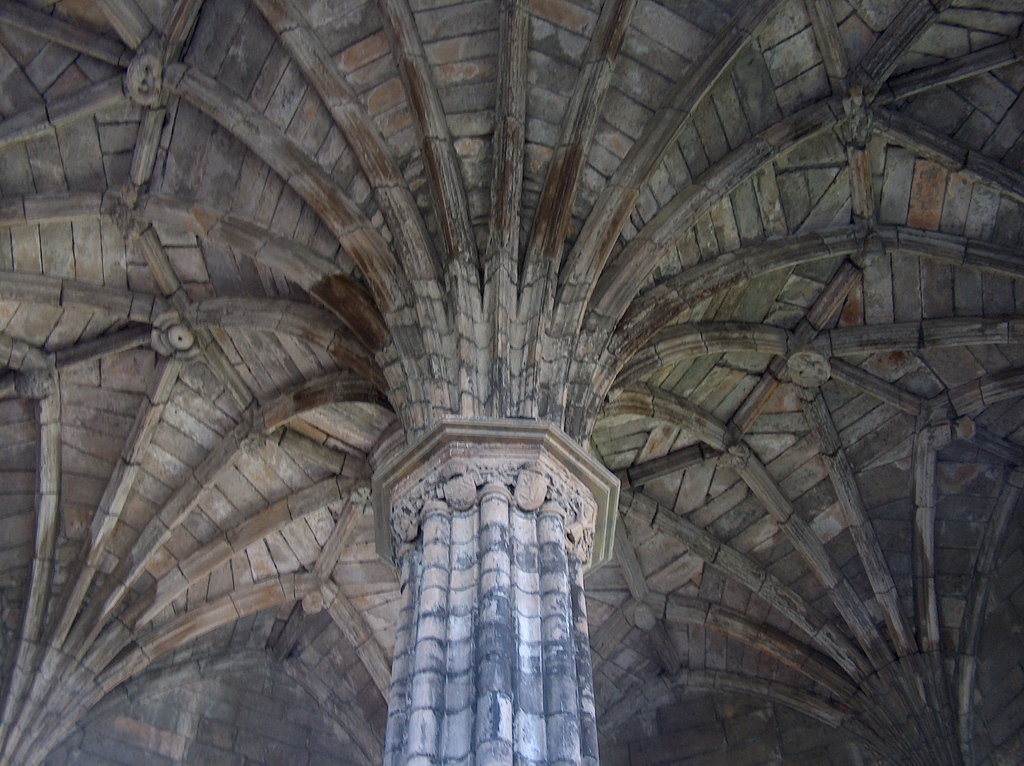
The Chapter House ribbed vaulted ceiling and central pillar
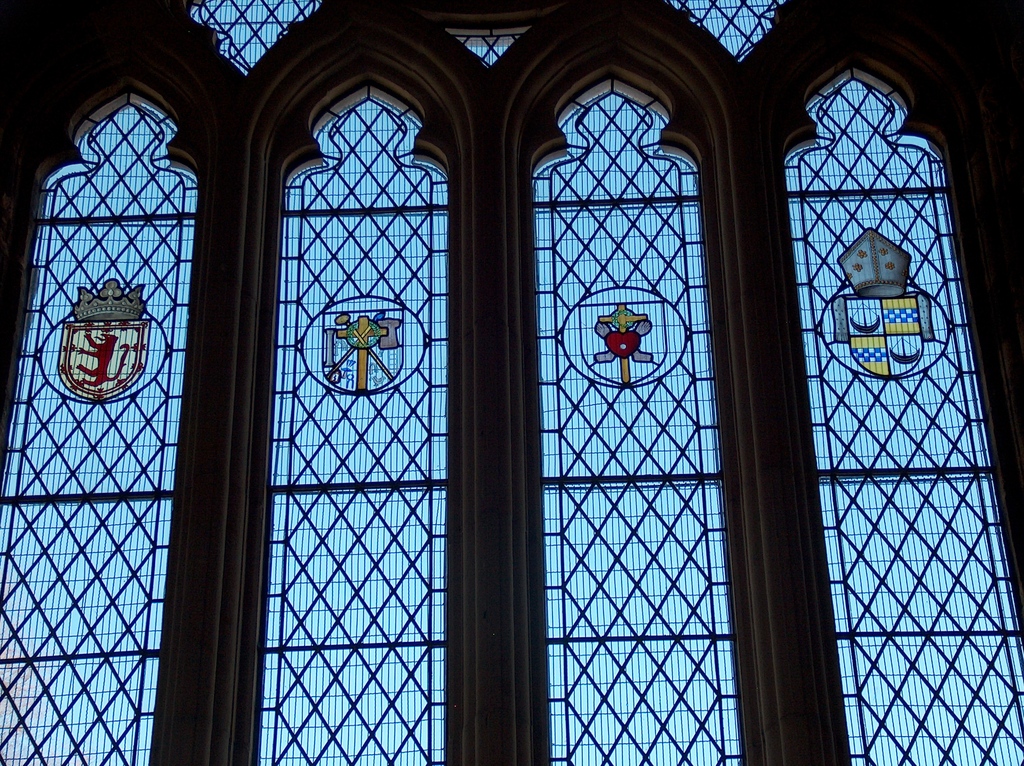
Stained glass in the Chapter House
See our Guide to Aberdeen for more places to visit, accommodation and restaurants.
In the heart of Old Aberdeen is King’s College. Founded in 1494 the focal point of the campus is the Chapel, completed in 1509.
This is the only remaining part of the original College and contains beautiful wood carving. Today this is a campus of the University of Aberdeen, while the oldest buildings have been restored and are used as a conference venue.
The chapel is open to visitors Monday – Friday.
Transport: 15 minutes' bus journey from the city centre - see First Bus service 20 and alight at stop 'Kings College'.
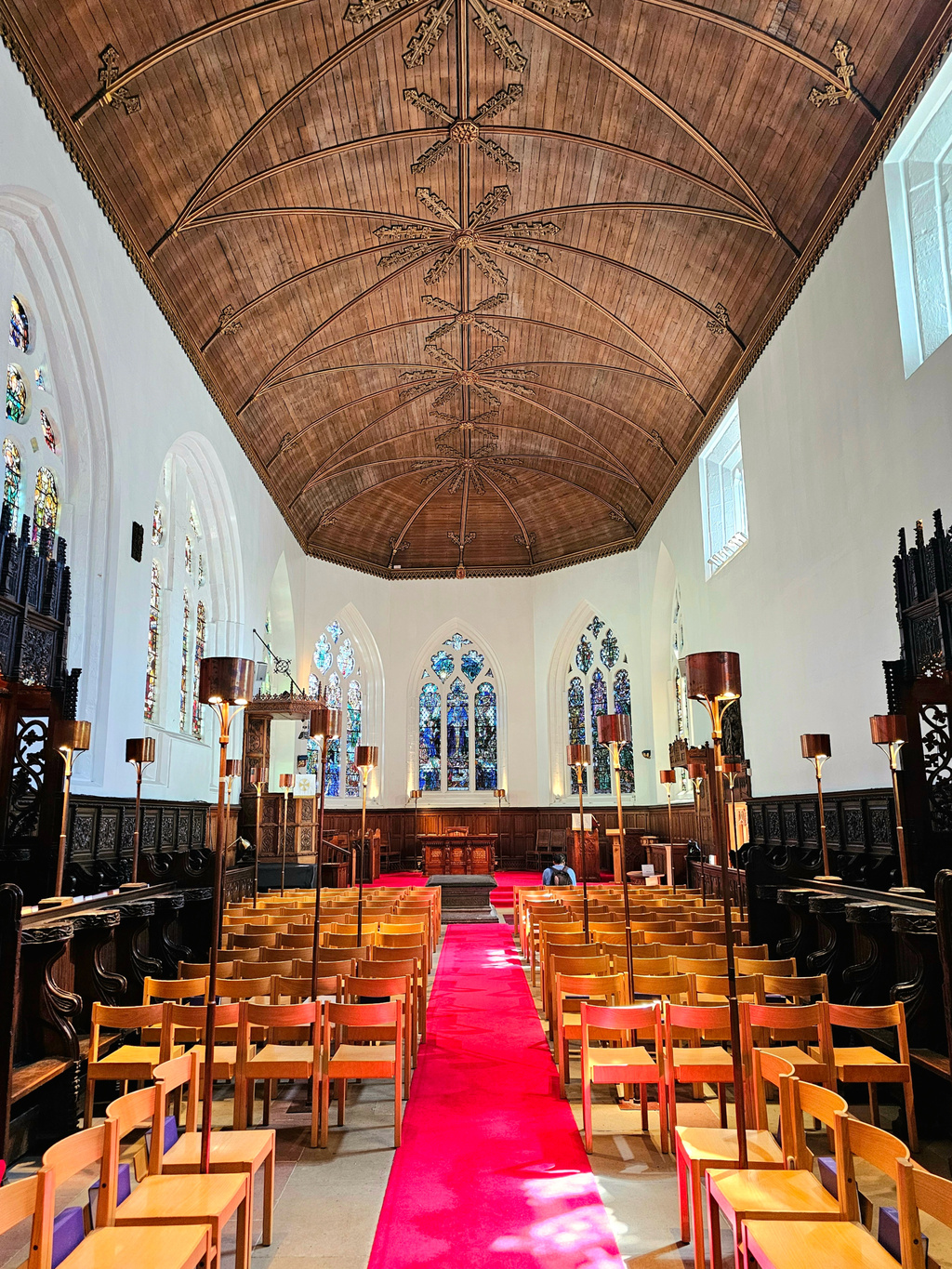
King's College chapel
Photo credit: “King's College chapel, Aberdeen, 1495 (1)” by Richard Mortel, CC BY 2.0
CATHEDRALS
Aberdeen has three cathedrals. St Andrew Cathedral Church is part of the Scottish Episcopal Church and is open for services and by appointment.
St Mary's Cathedral is part of the Catholic Church and open daily. Both are within walking distance of the city centre.
The Cathedral Church of St Machar is part of the Church of Scotland and dates from the 15th century. It is open daily and welcomes tourists. Of particular interest is the heraldic ceiling dating from 1520.
St Machar's is 20 minutes' bus journey from the city centre - see First Bus service 20 and alight at stop 'The Old Town House'.
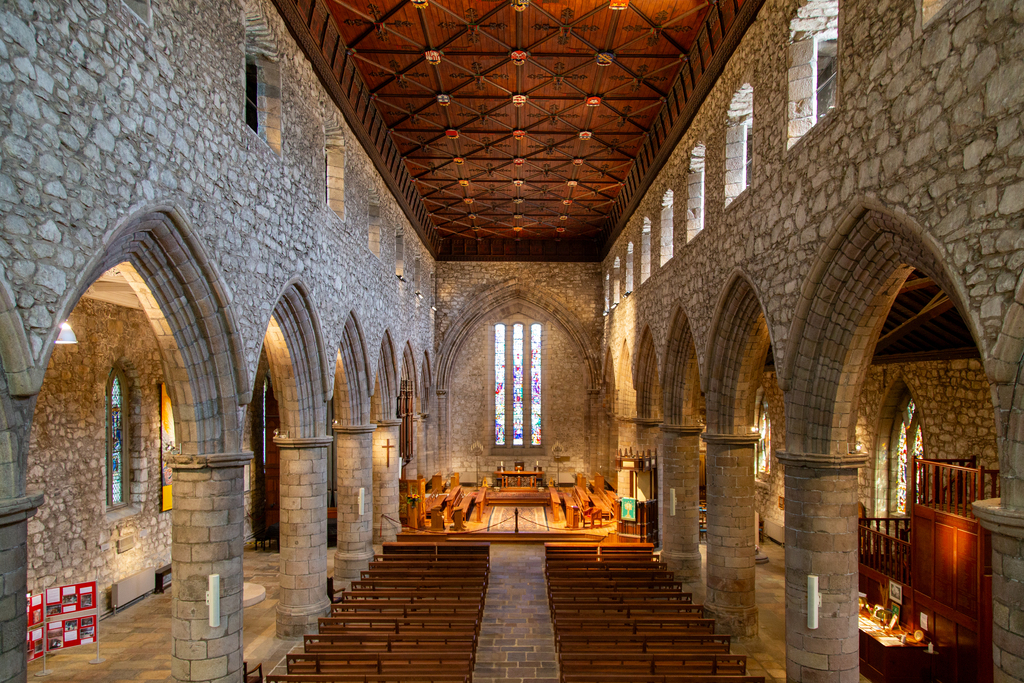
The Cathedral Church of St Machar
Photo credit: “St Machar's, Aberdeen” by Tom Parnell, CC BY-SA 2.0
See our Guide to the stunning islands of Orkney for other places to visit.
St Magnus Cathedral, known as the ‘Light in the North’, was founded in 1137 by the Viking, Earl Rognvald, in order of his uncle St Magnus and is the most northerly cathedral in Britain. It is also one of only three Scottish pre Reformation cathedrals still intact.
Between 1154 and 1472 the Cathedral was under the care of the Norwegian archbishops and it was not until 1486 that King James III assigned the Cathedral to the people of Kirkwall. The Cathedral came through the Reformation unscathed although by the 20th century the condition of the building had deteriorated and restoration work was commenced.
The building is constructed of red sandstone and the original builders are thought to have been trained at Durham Cathedral. It is an amazing landmark and literally towers above the Kirkwall skyline.
The Cathedral is located in the centre of Kirkwall and entrance is free. It is open most days and services are held on Sundays.
There are also guided tours of the upper levels throughout the year. There is a charge for these and they should be booked with the custodian on 01856 874894.
Transport: 5 minutes' walk from Kirkwall Travel Centre.
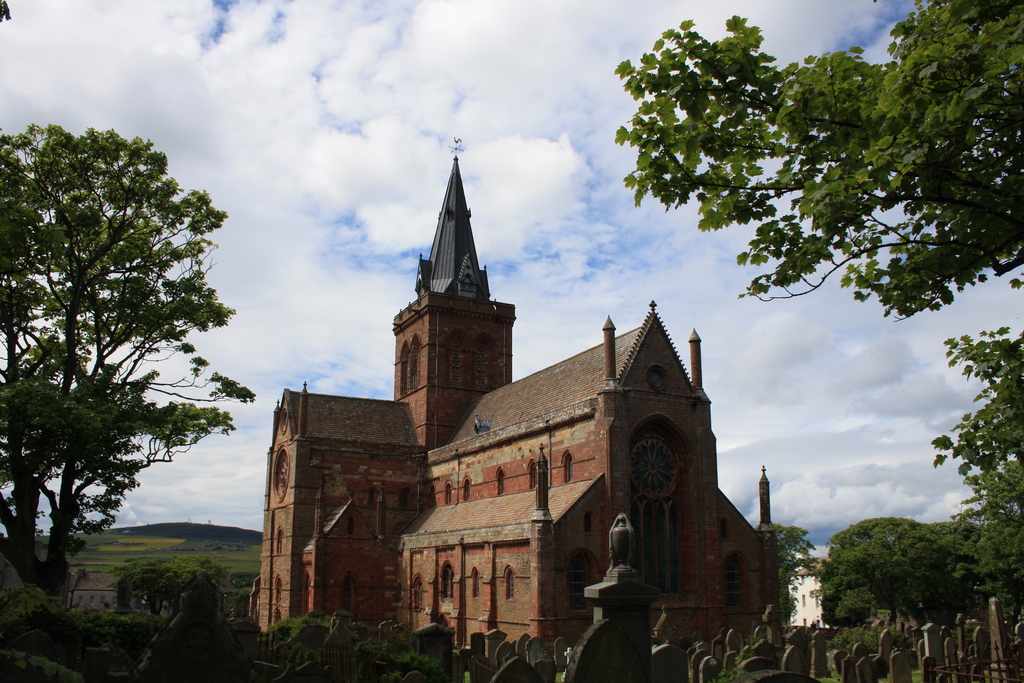
St Magnus Cathedral
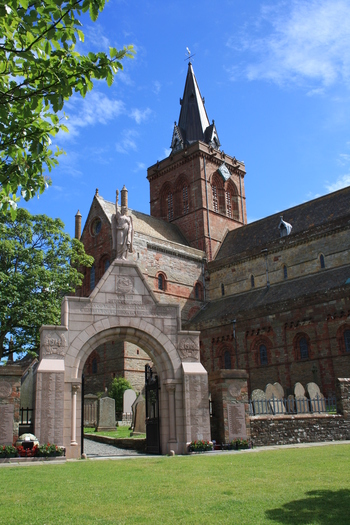
St Magnus Cathedral outside
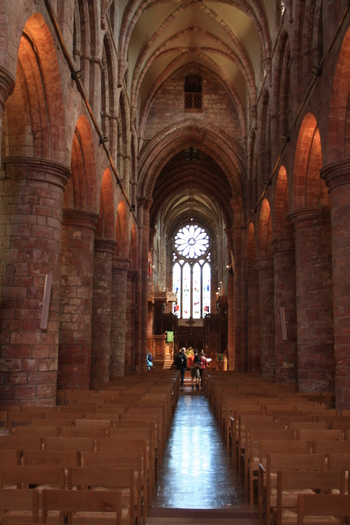
St Magnus Cathedral inside
The Chapel is located on the tiny island of Lamb Holm (connected to the Mainland by the first of the Churchill Barriers). It is a unique memorial to 550 Italian Prisoners of War who were interned there in the 1940s.
This beautiful little chapel was converted internally from two corrugated iron nissen huts and has amazing paintings throughout the interior. Considering that the craftsmen had little or no materials it is all the more remarkable for the quality of the workmanship.
Transport: 15 minutes' bus journey from Kirkwall - see Stagecoach service X1 (alight at stop 'Lamb Holm, Italian Chapel Road End').
See our Guide to the Inner Hebrides for more details about this collection of islands.
Iona is often referred to as ‘The Cradle of Christianity in Scotland’ as it was here that Columba first landed after being banished from Ireland in 563AD. Once settled on the island, Columba and his followers built a wooden monastery.
This was later replaced with stone when the monastery was turned into a Benedictine Abbey around 1200. Today Iona Abbey has been fully restored.
The highest point of the island is Dun I at 323 feet and commands wonderful panoramic views towards Mull, Staffa and beyond.
Transport: 1 hour 20 minutes' bus journey from Craignure ferry terminal, Mull to Fionnphort ferry terminal, Mull - see West Coast Motors services 96, 496). Then take Caledonian MacBrayne ferry from Mull to Iona.
Page last updated 1 December 2025